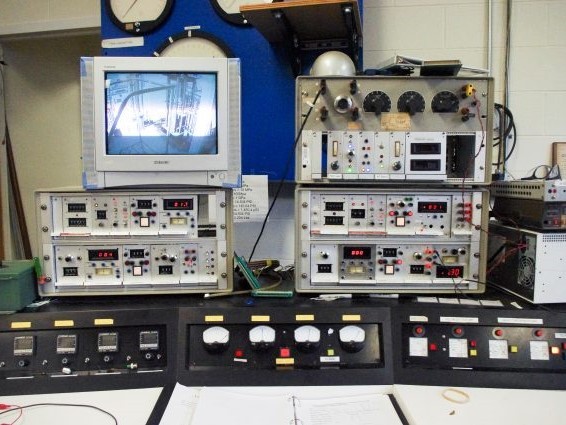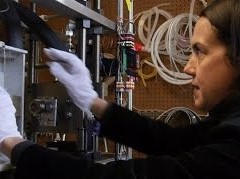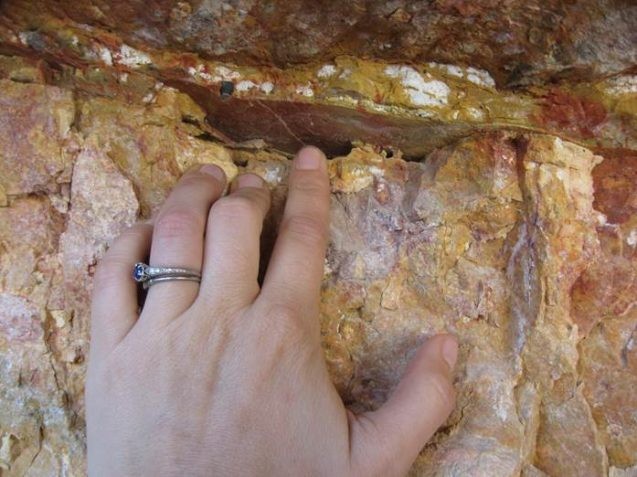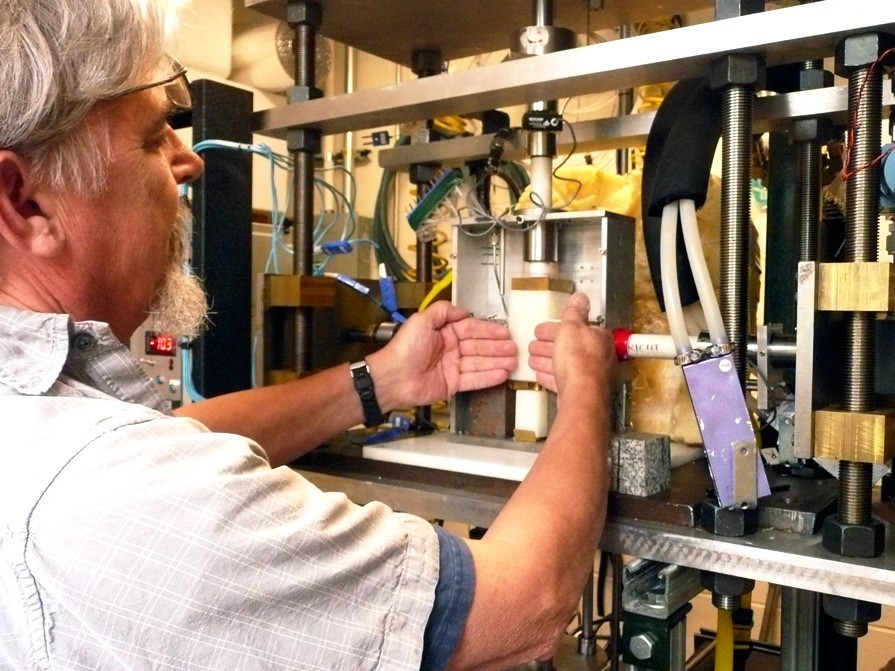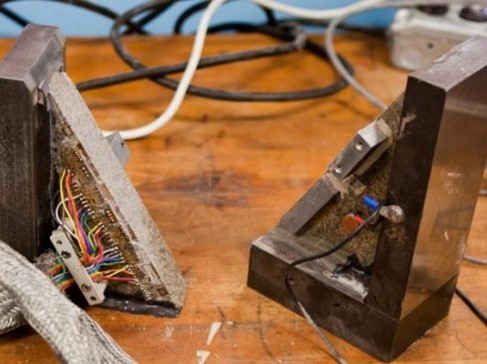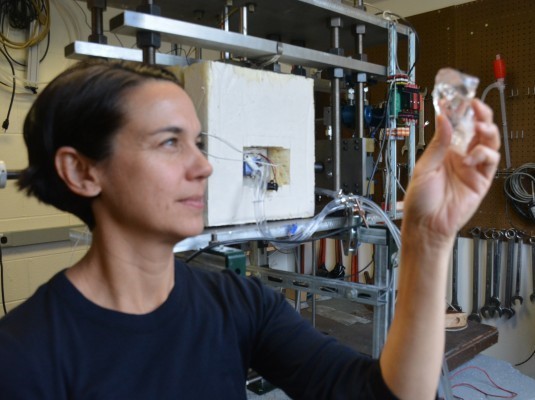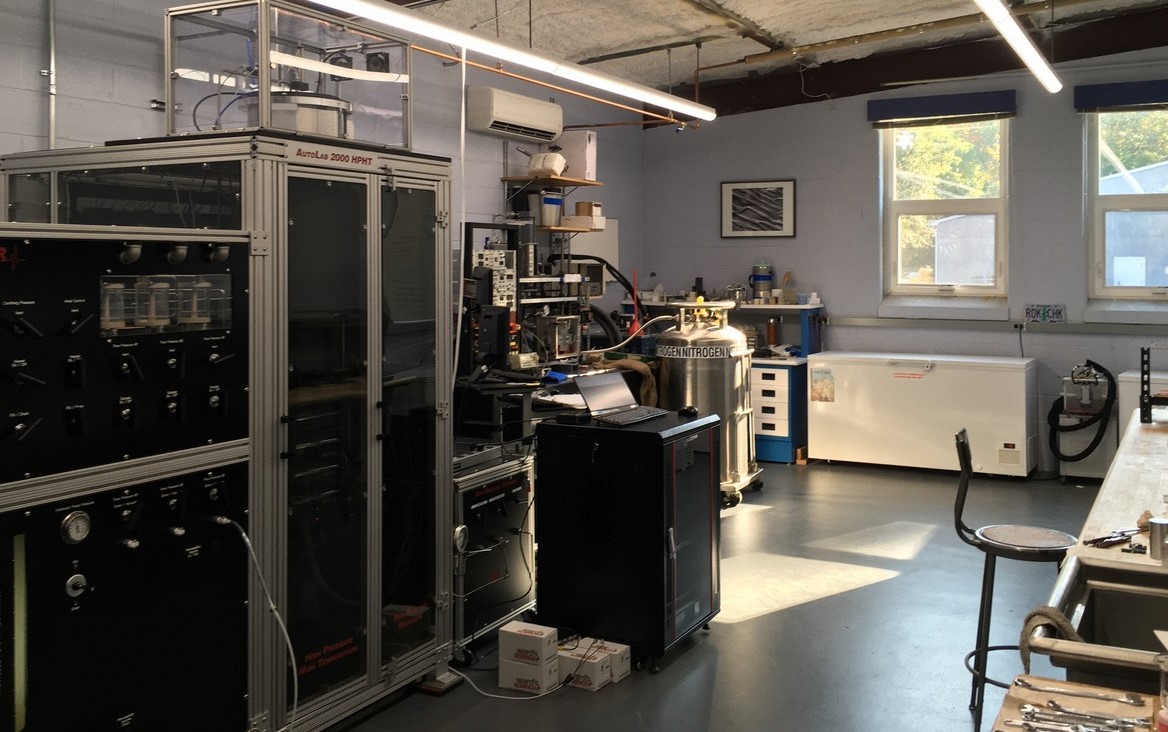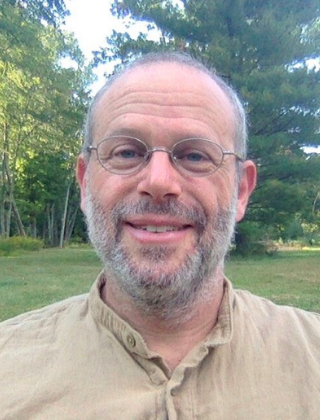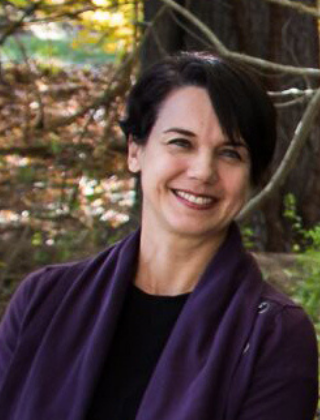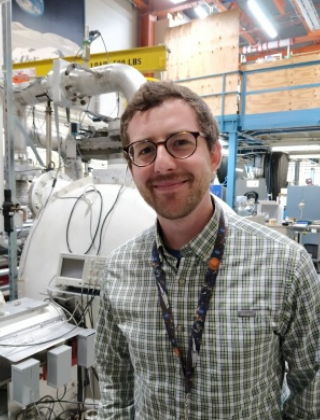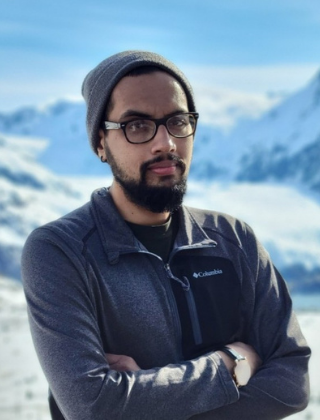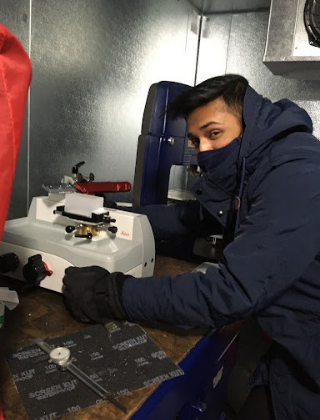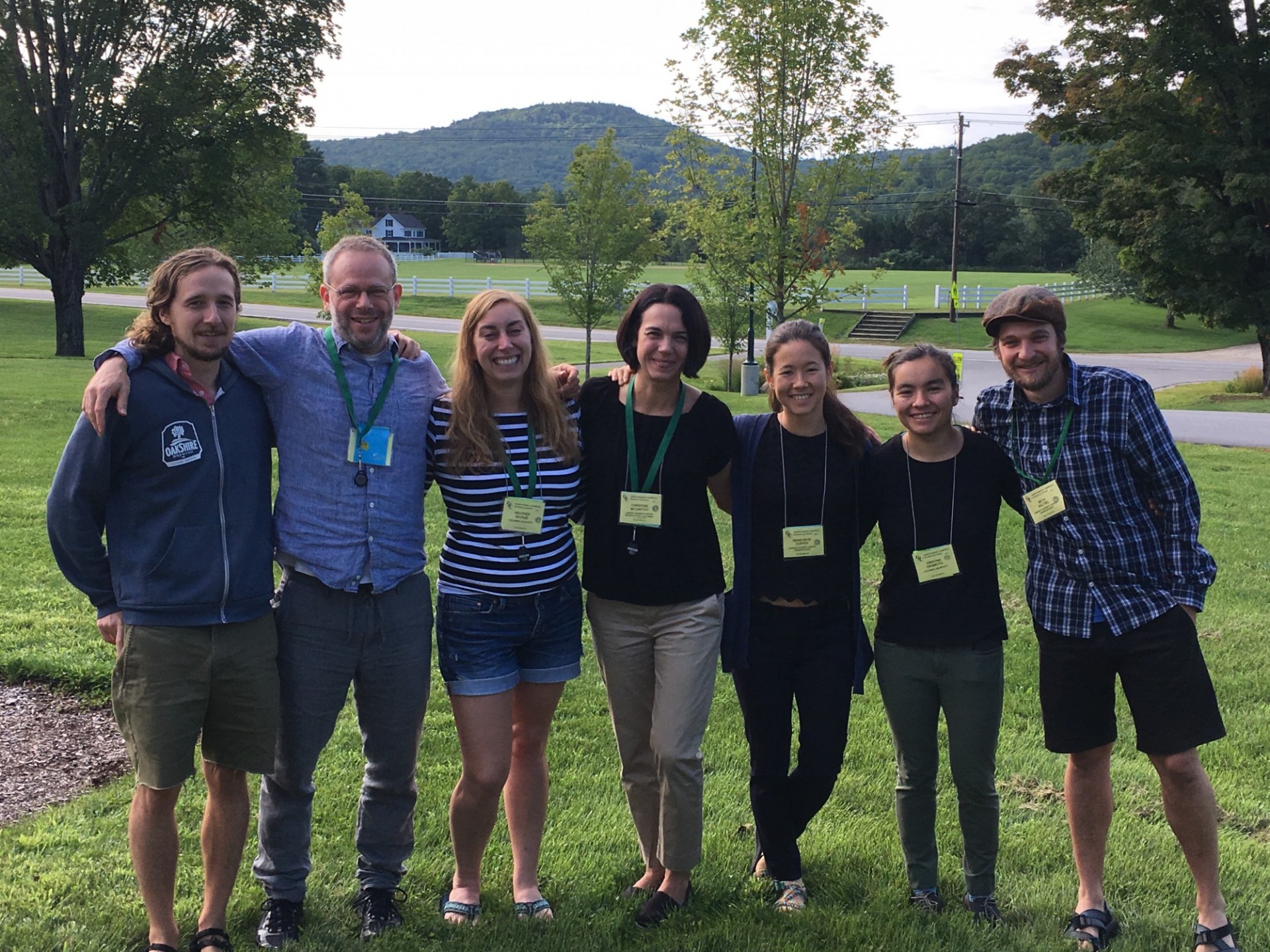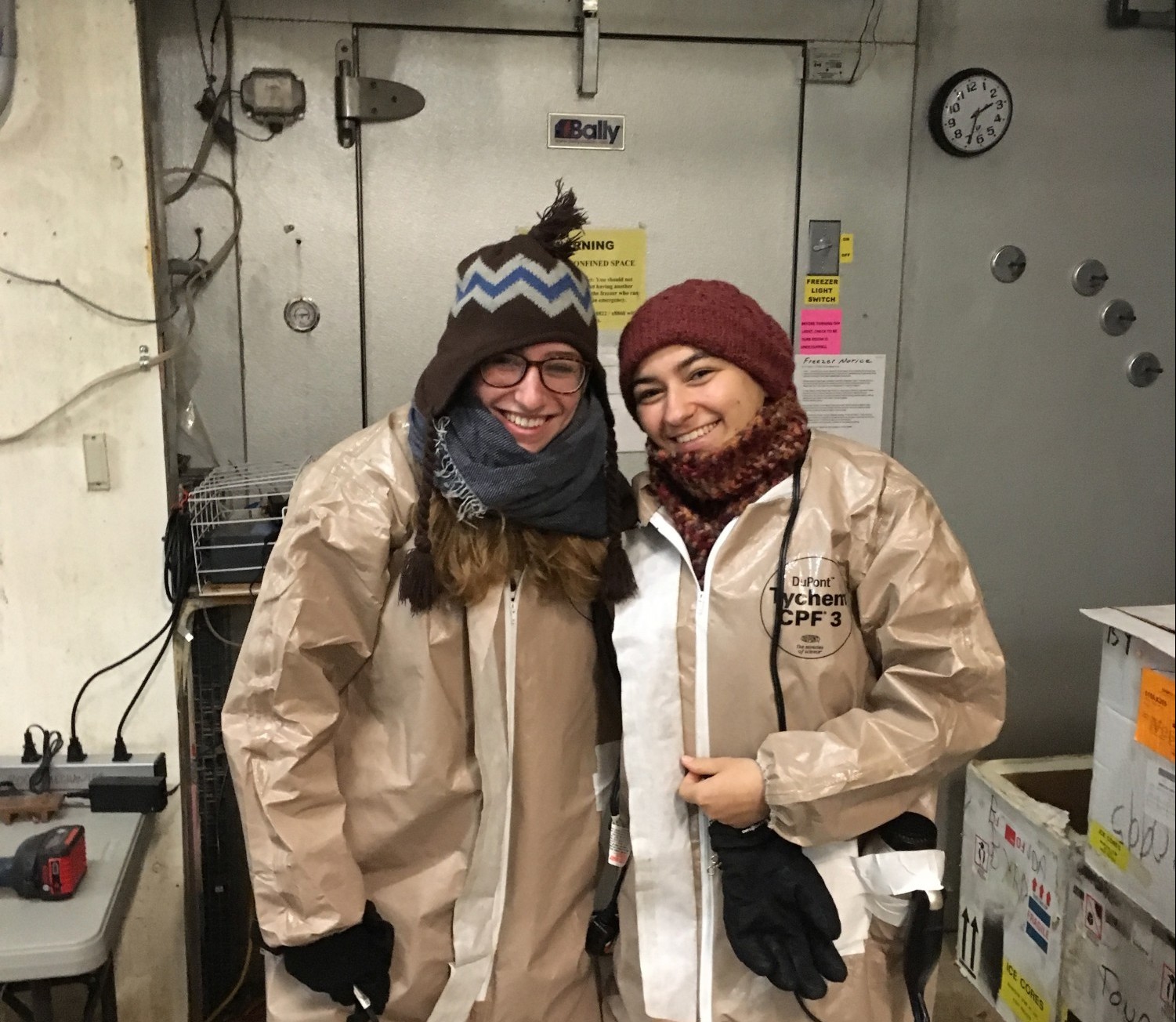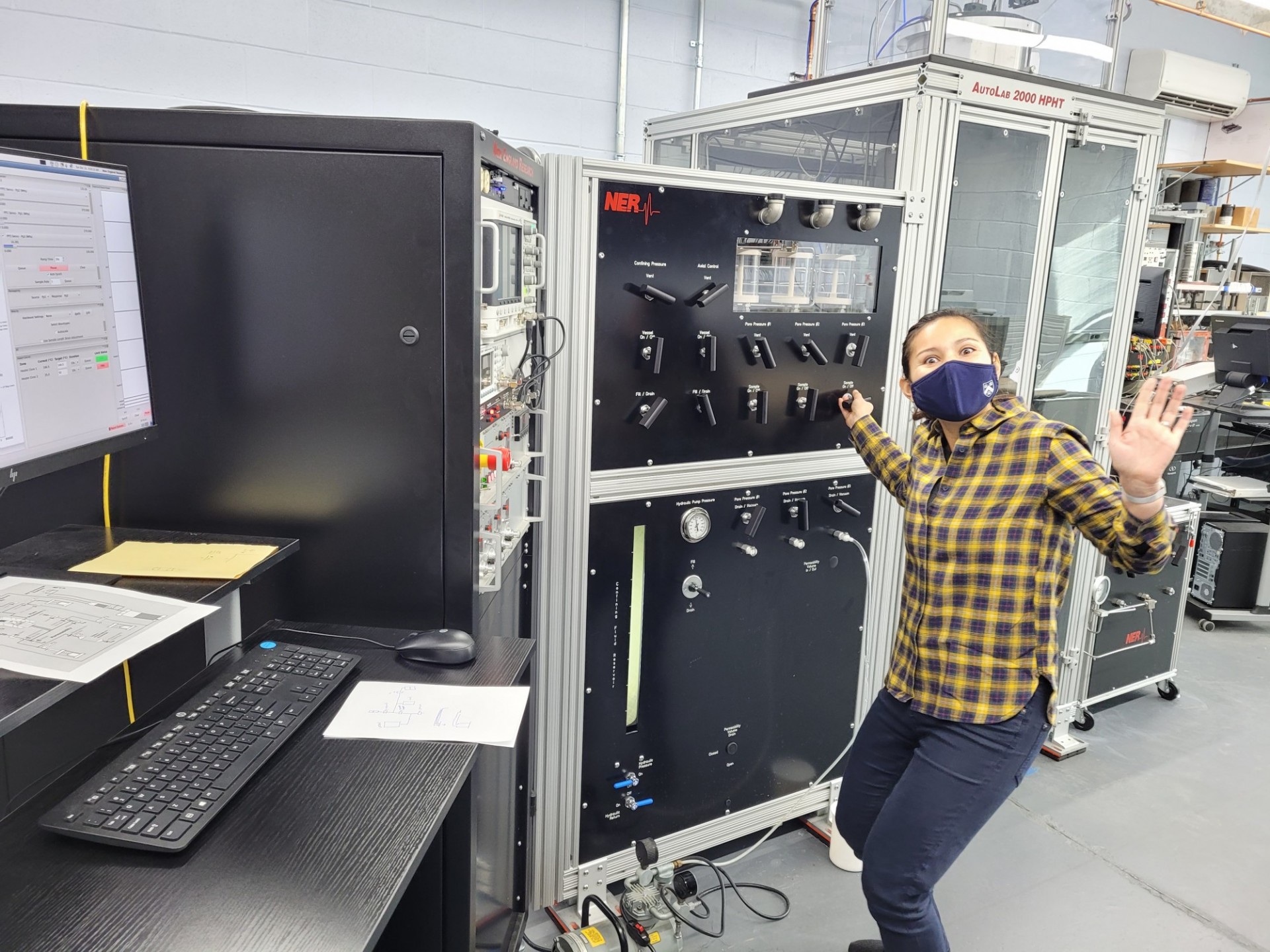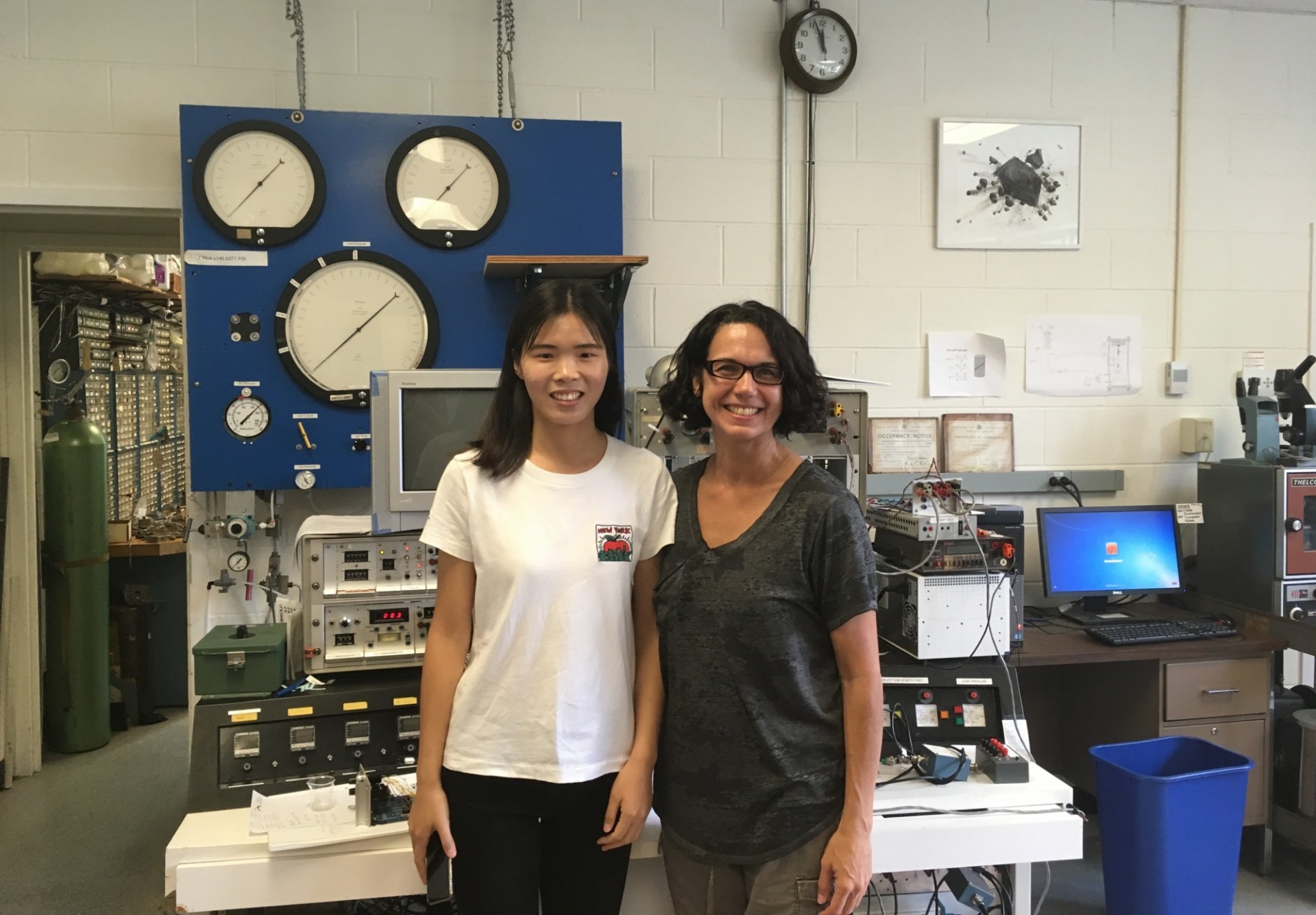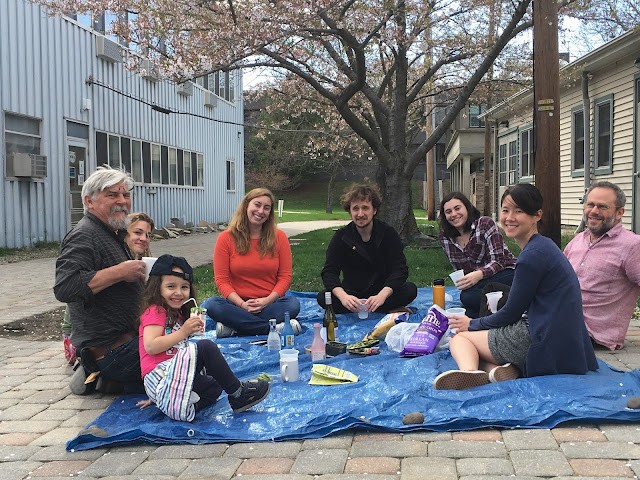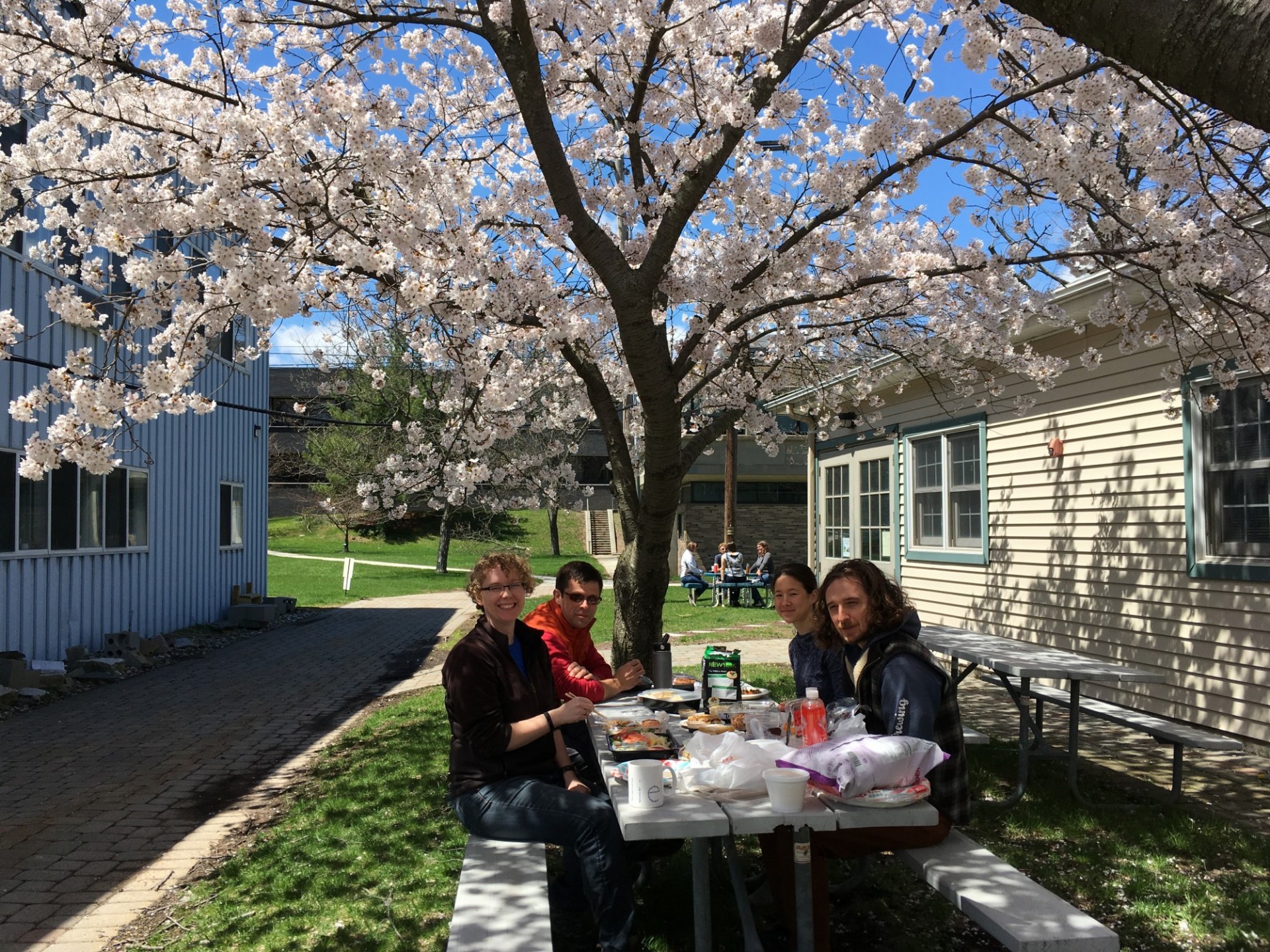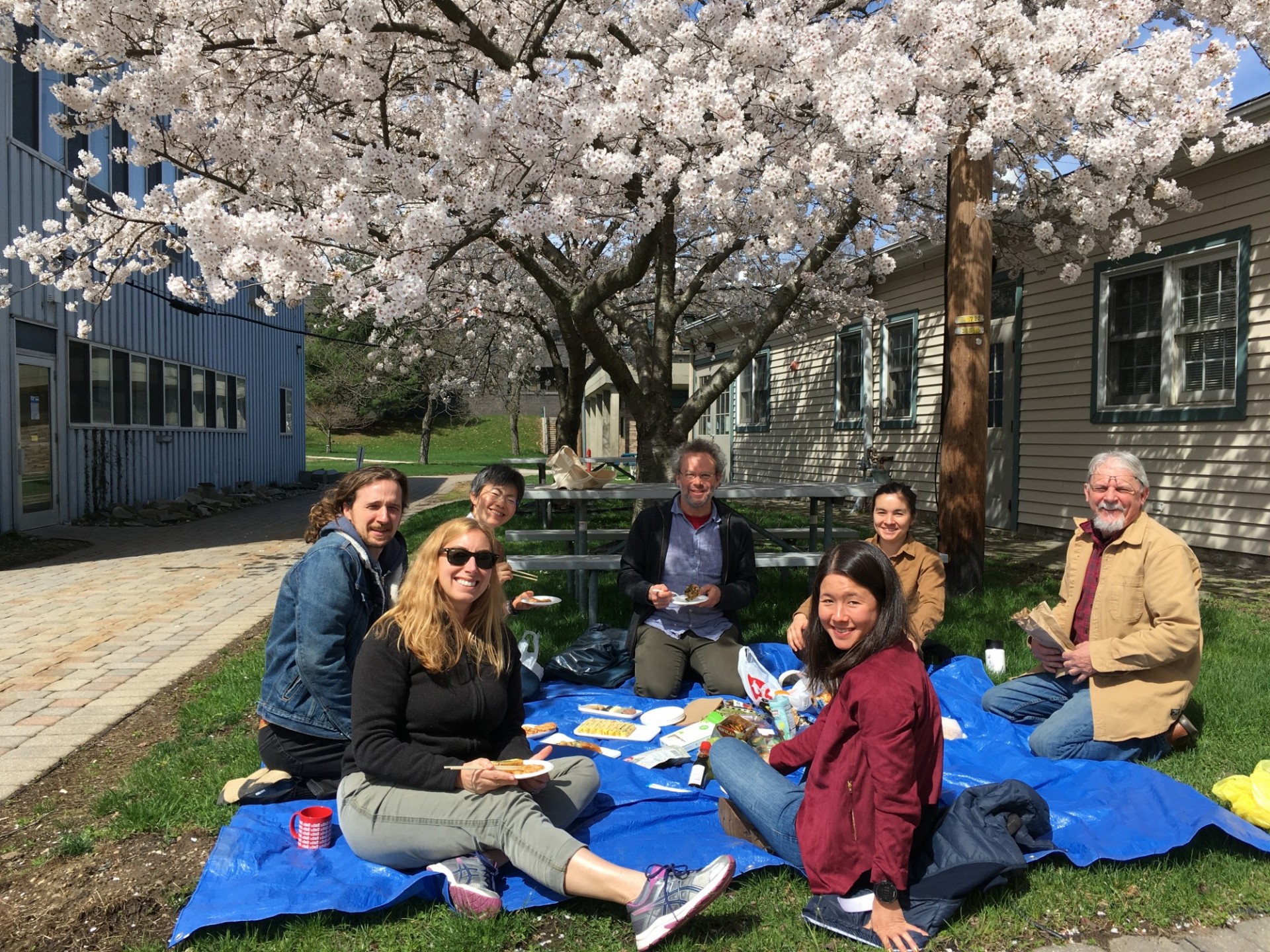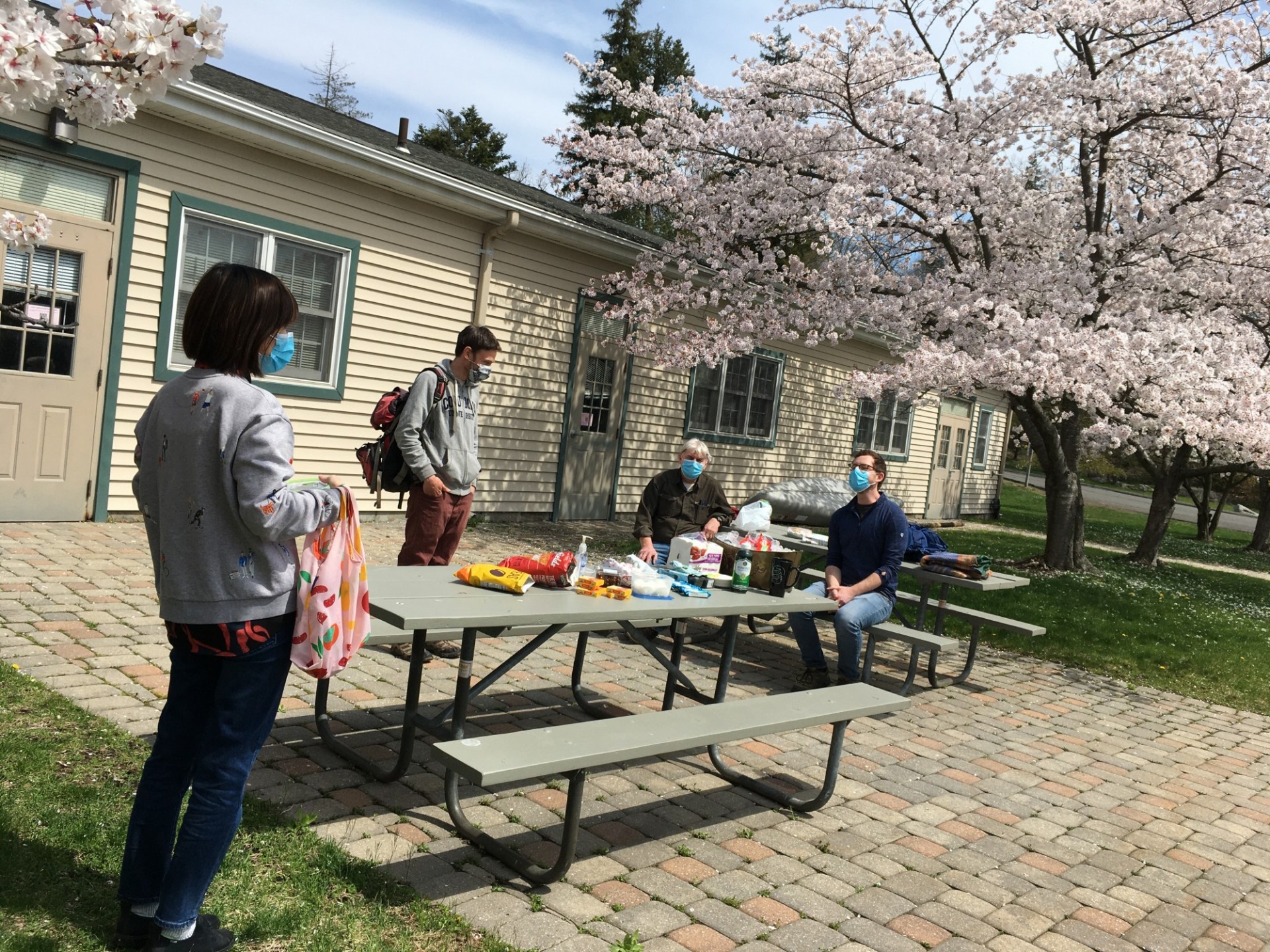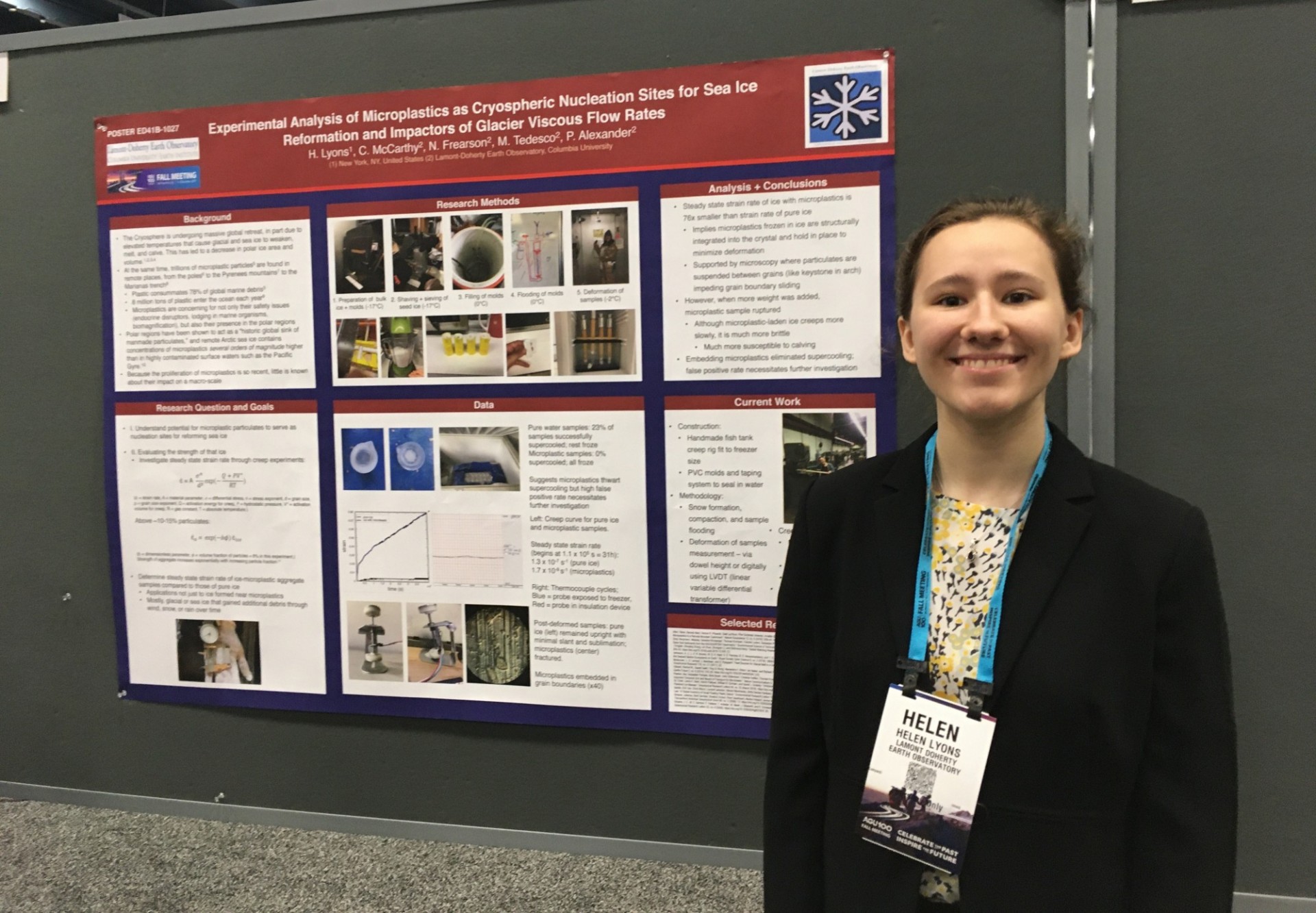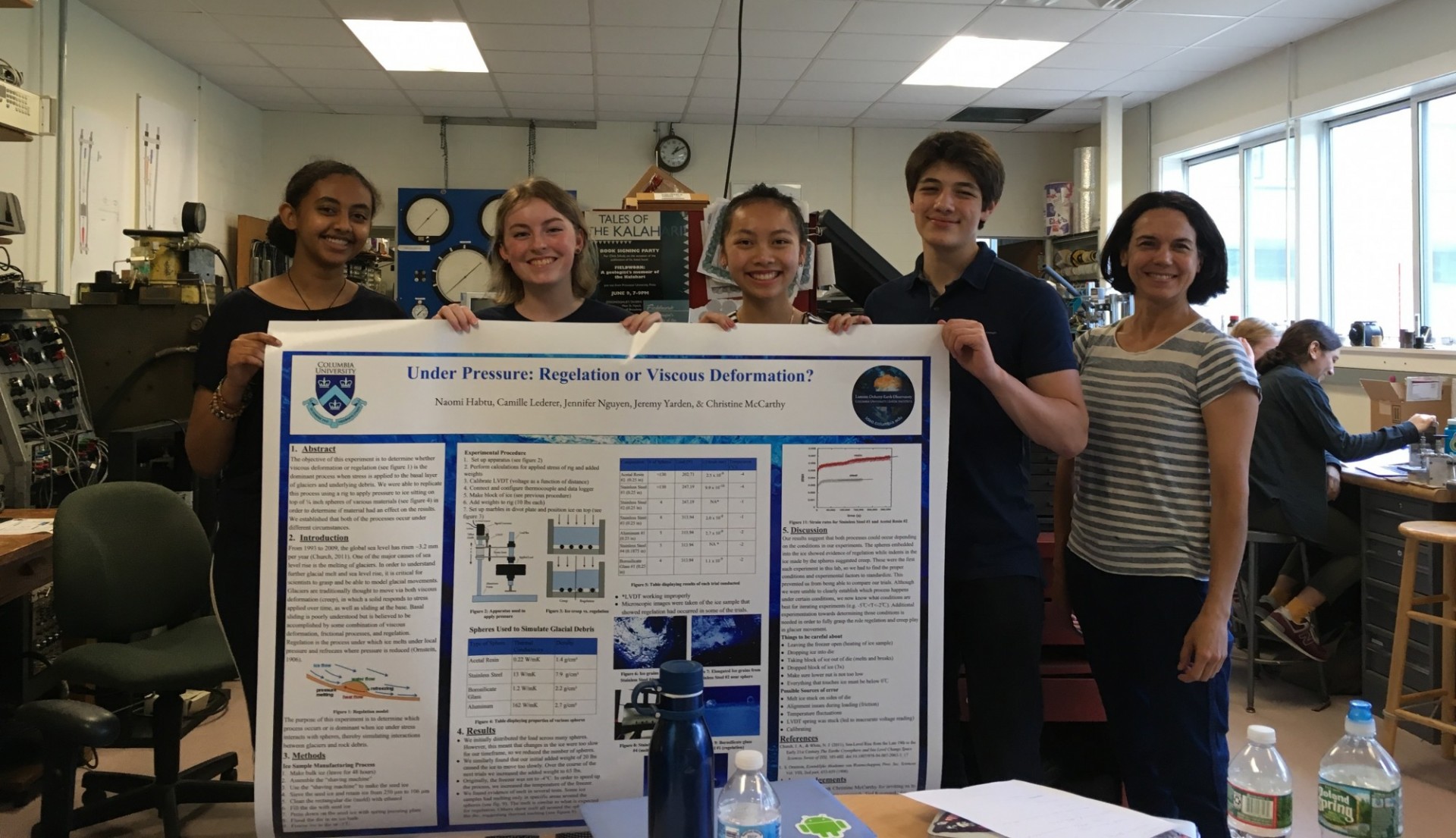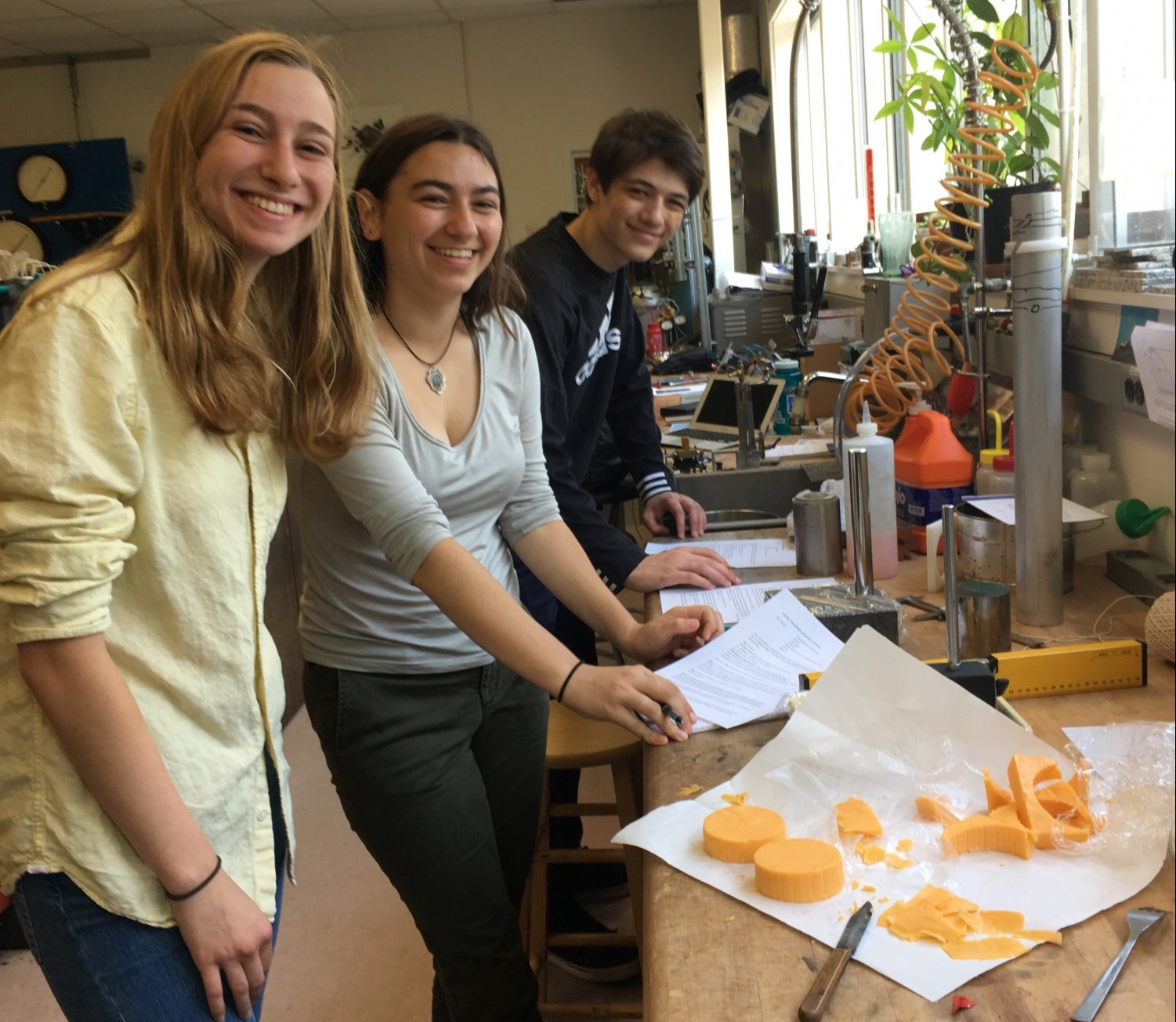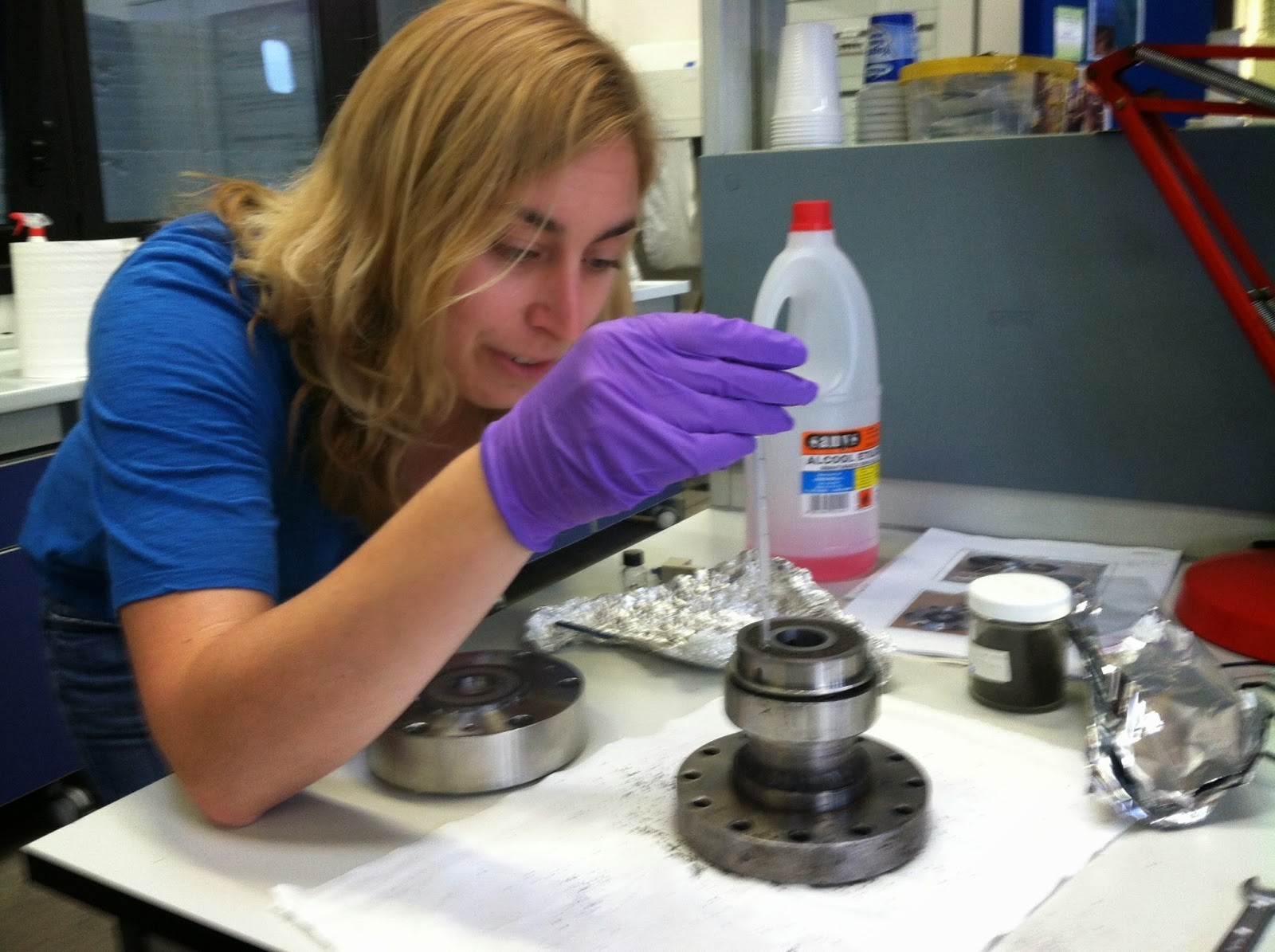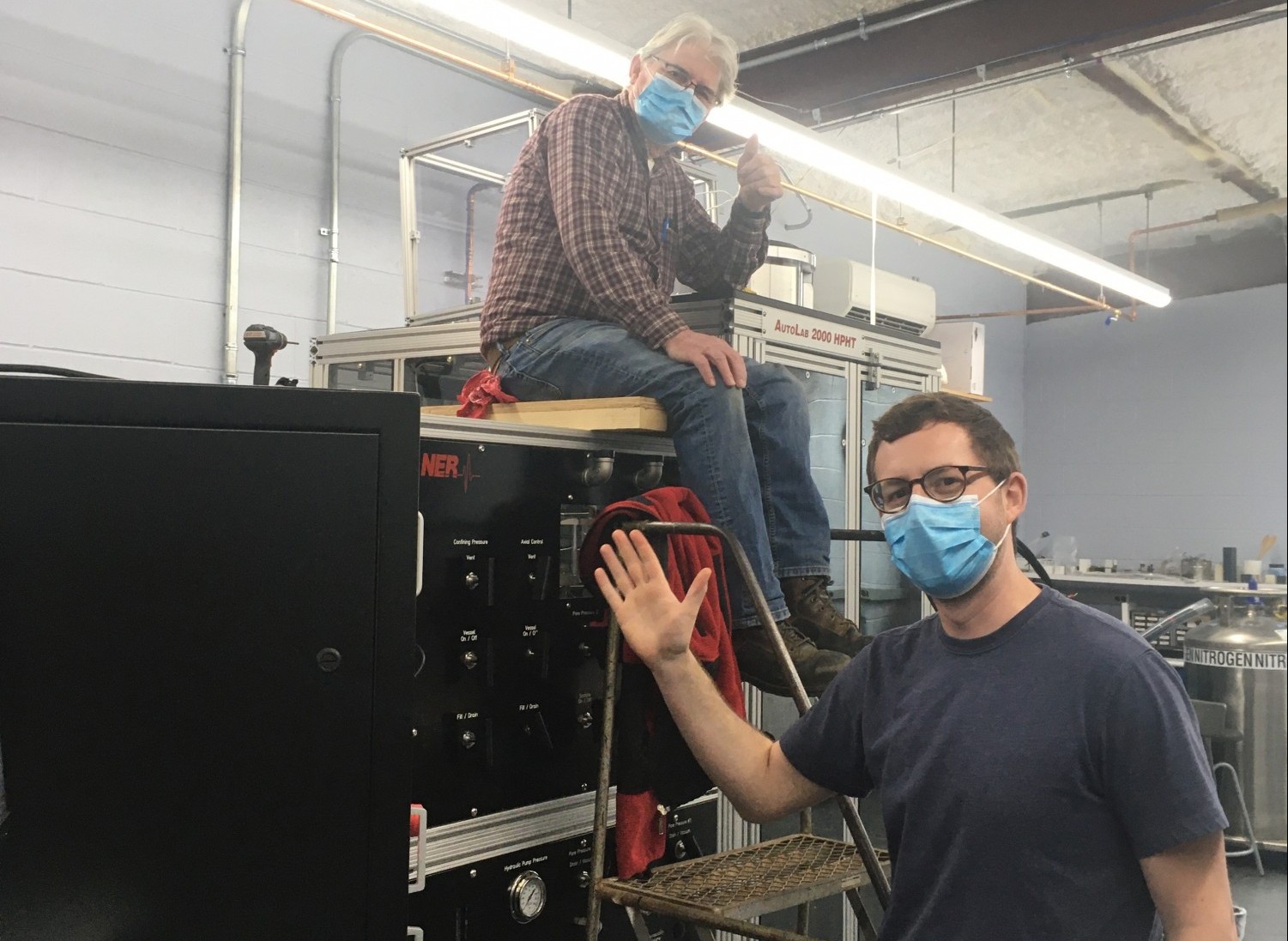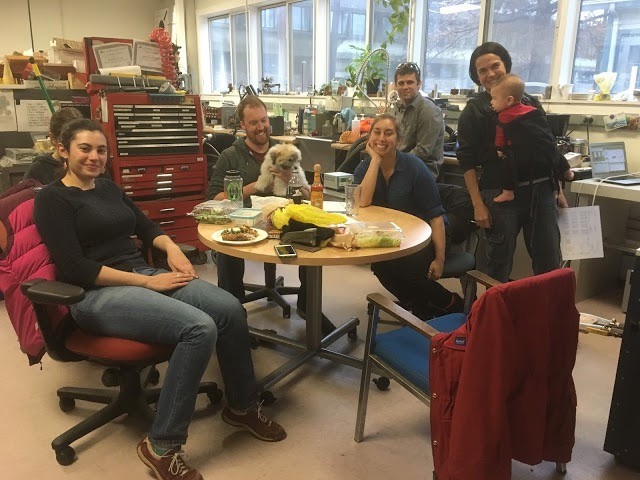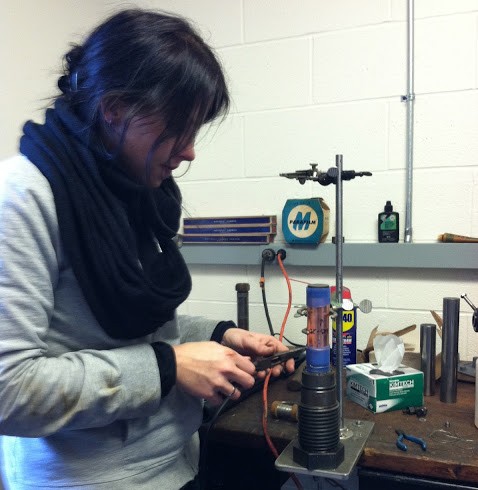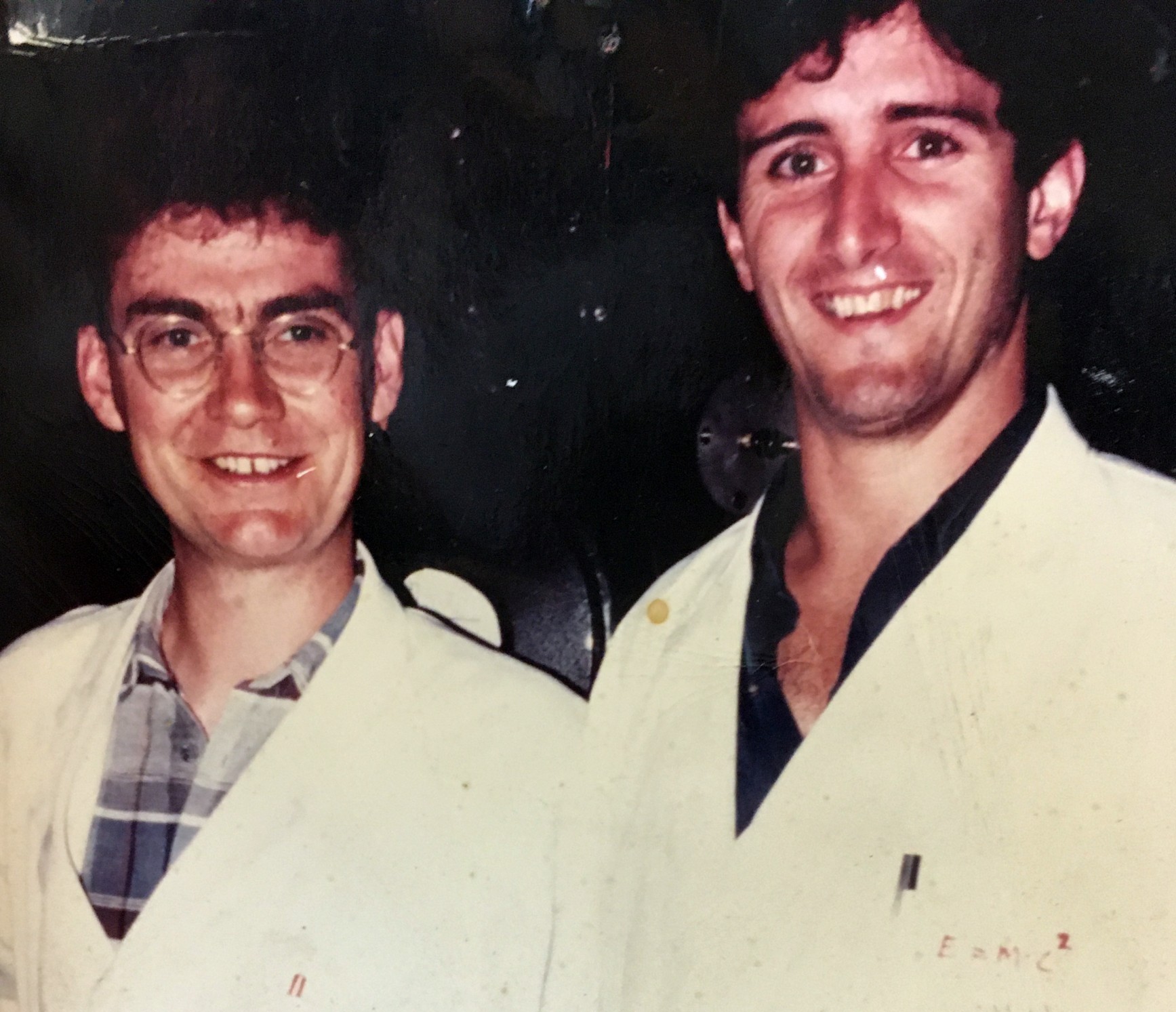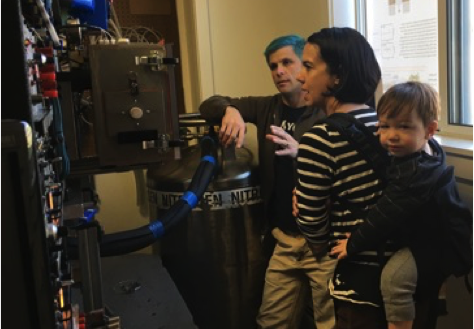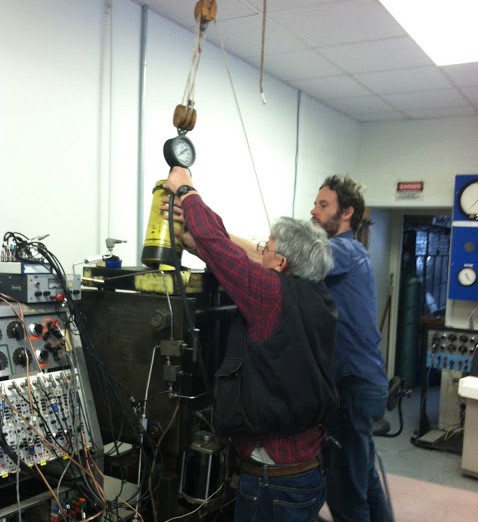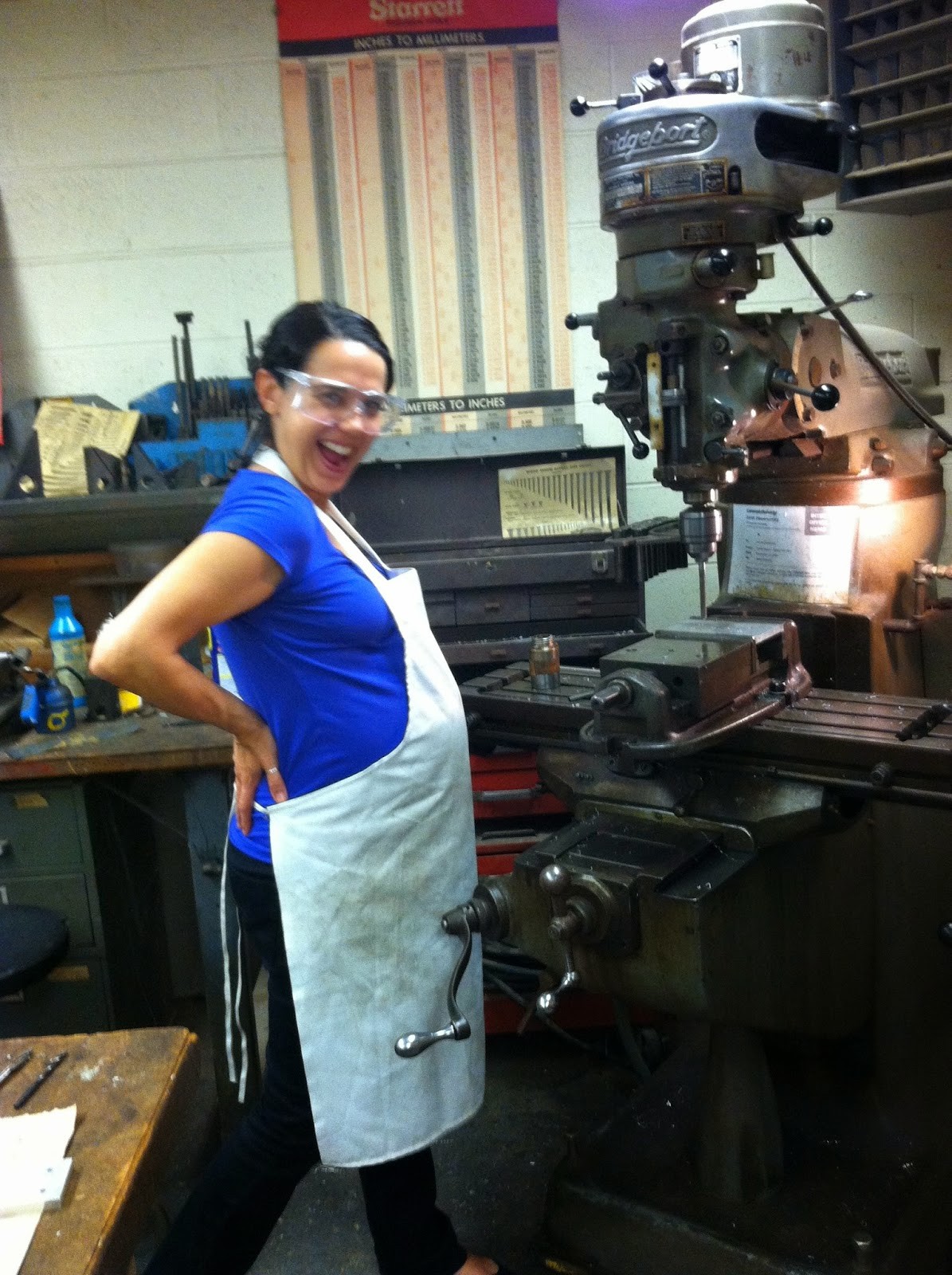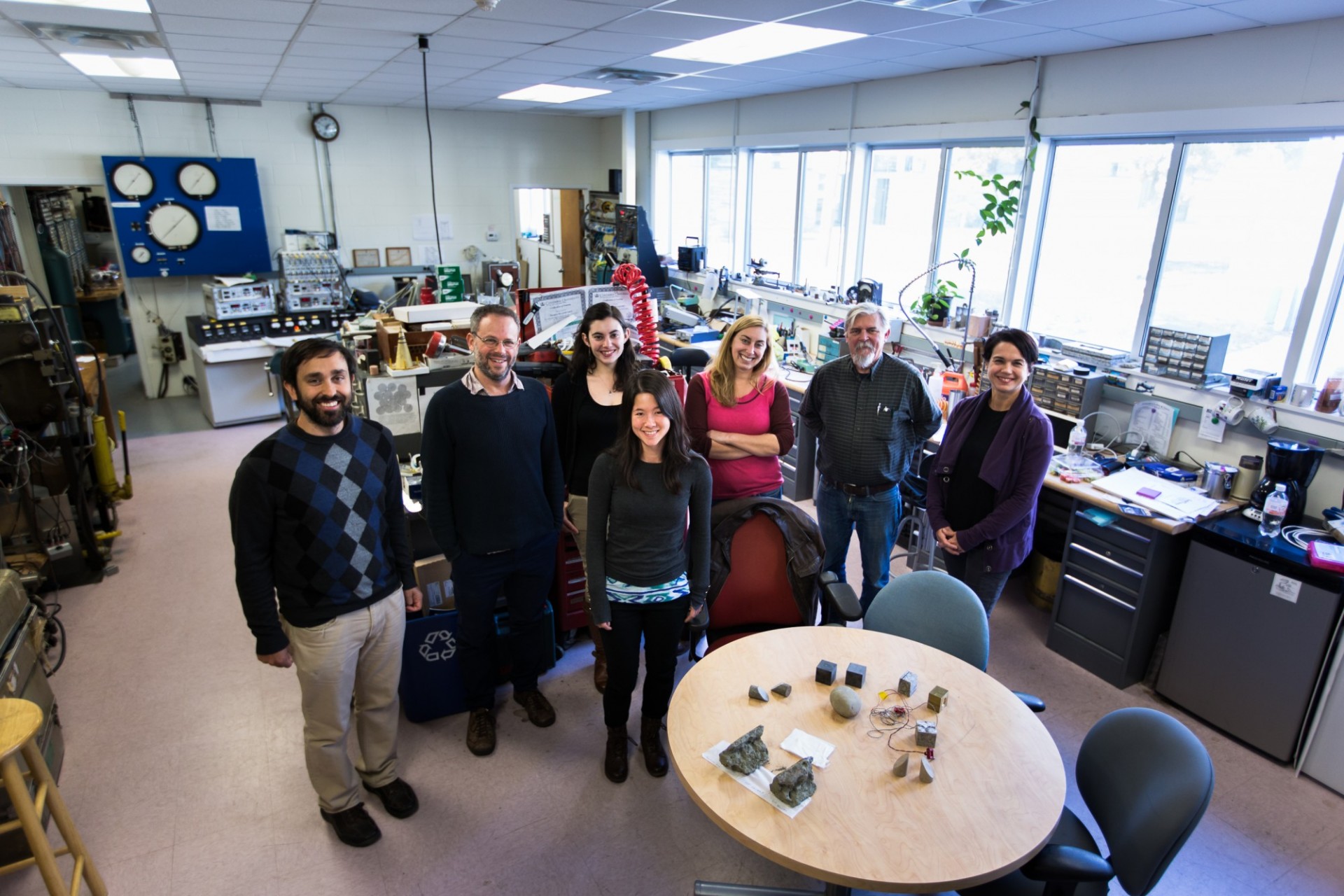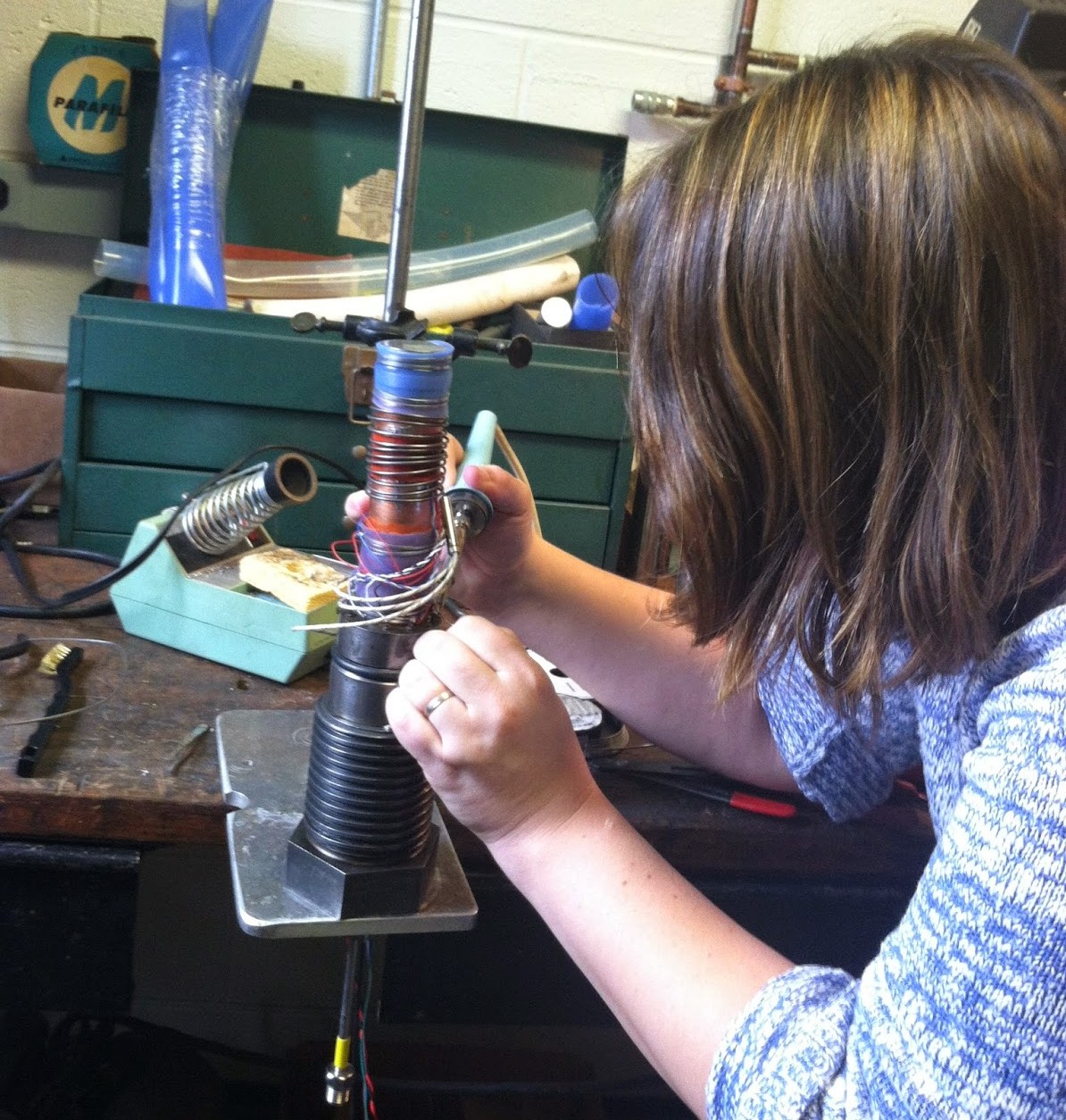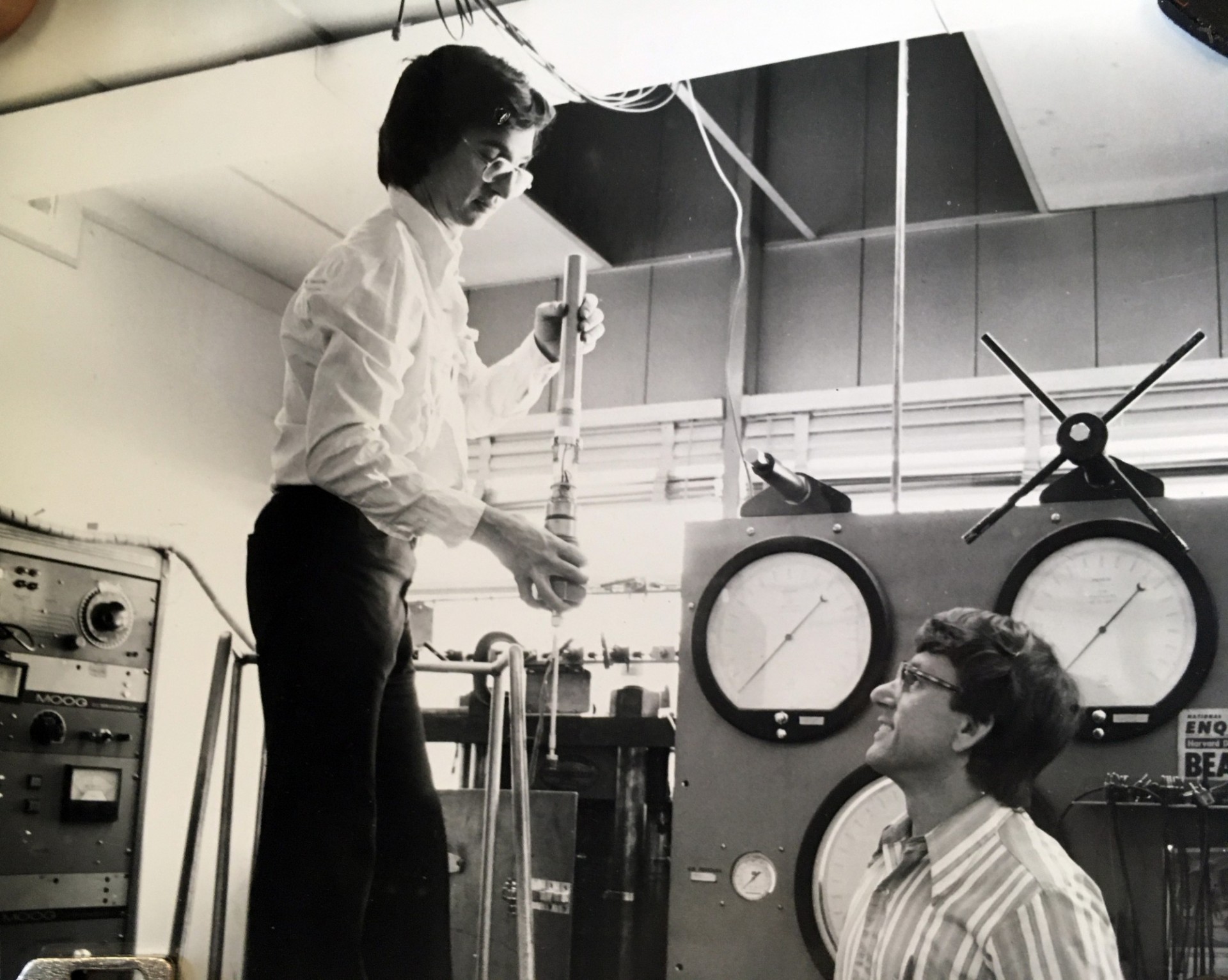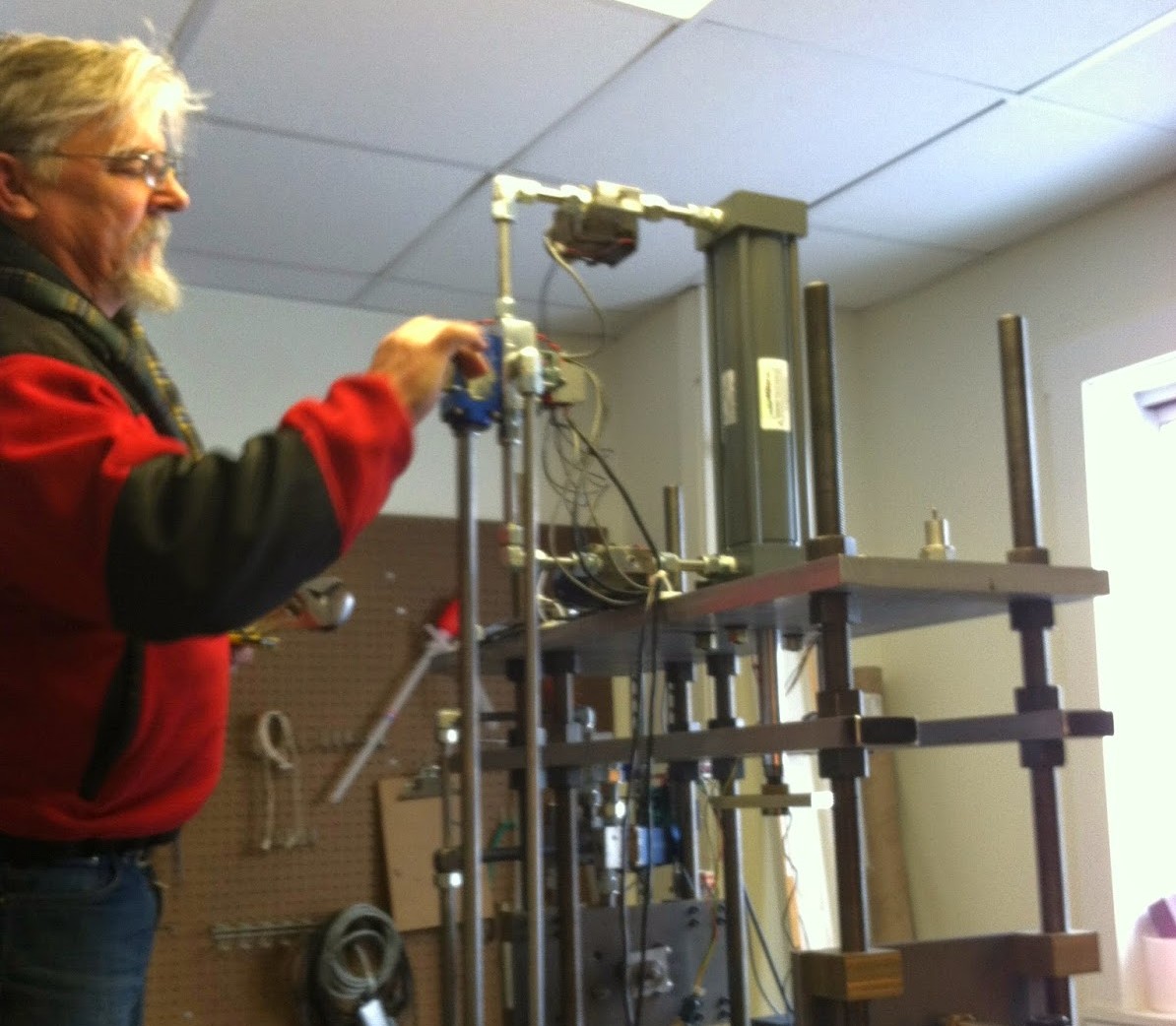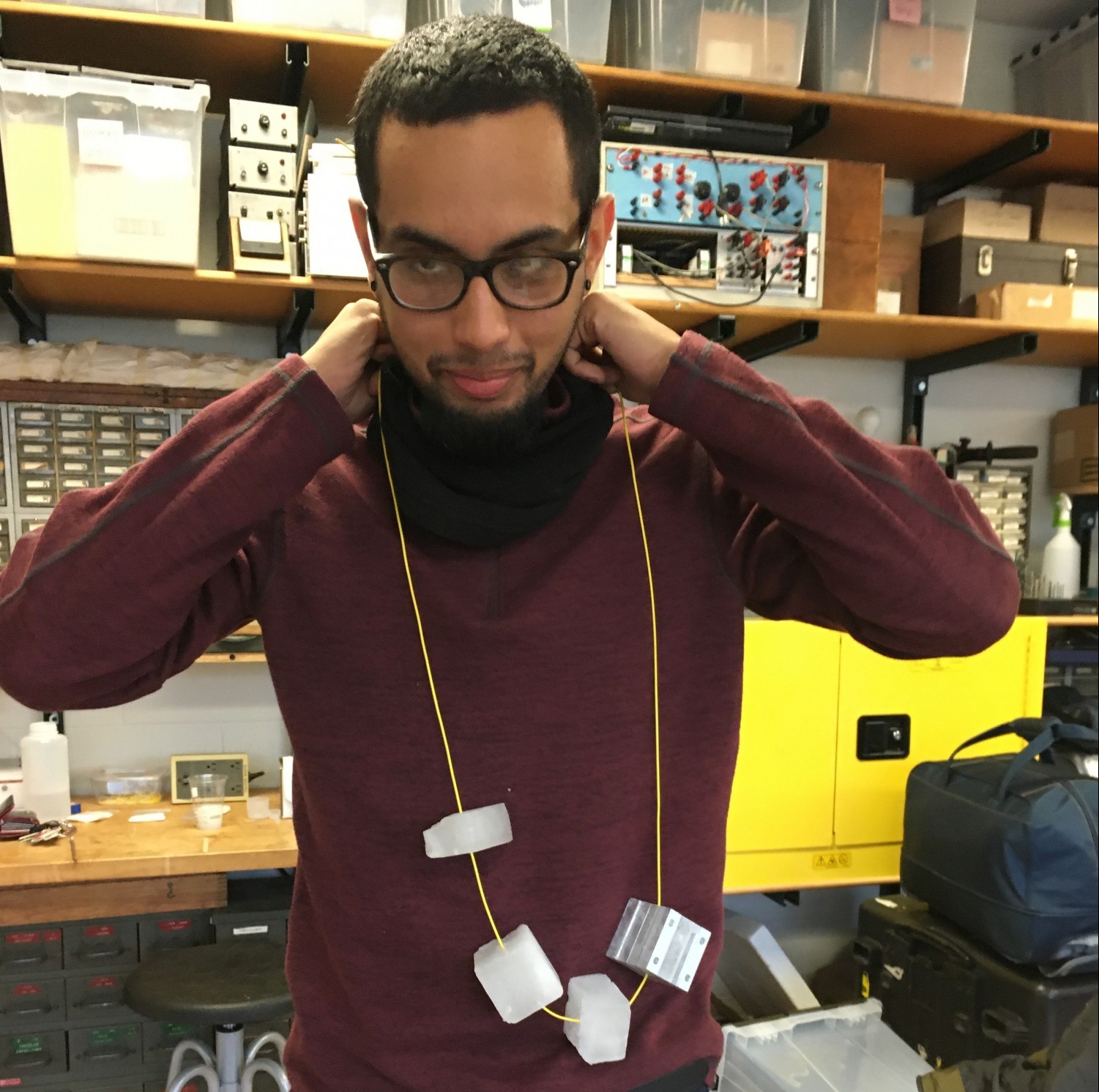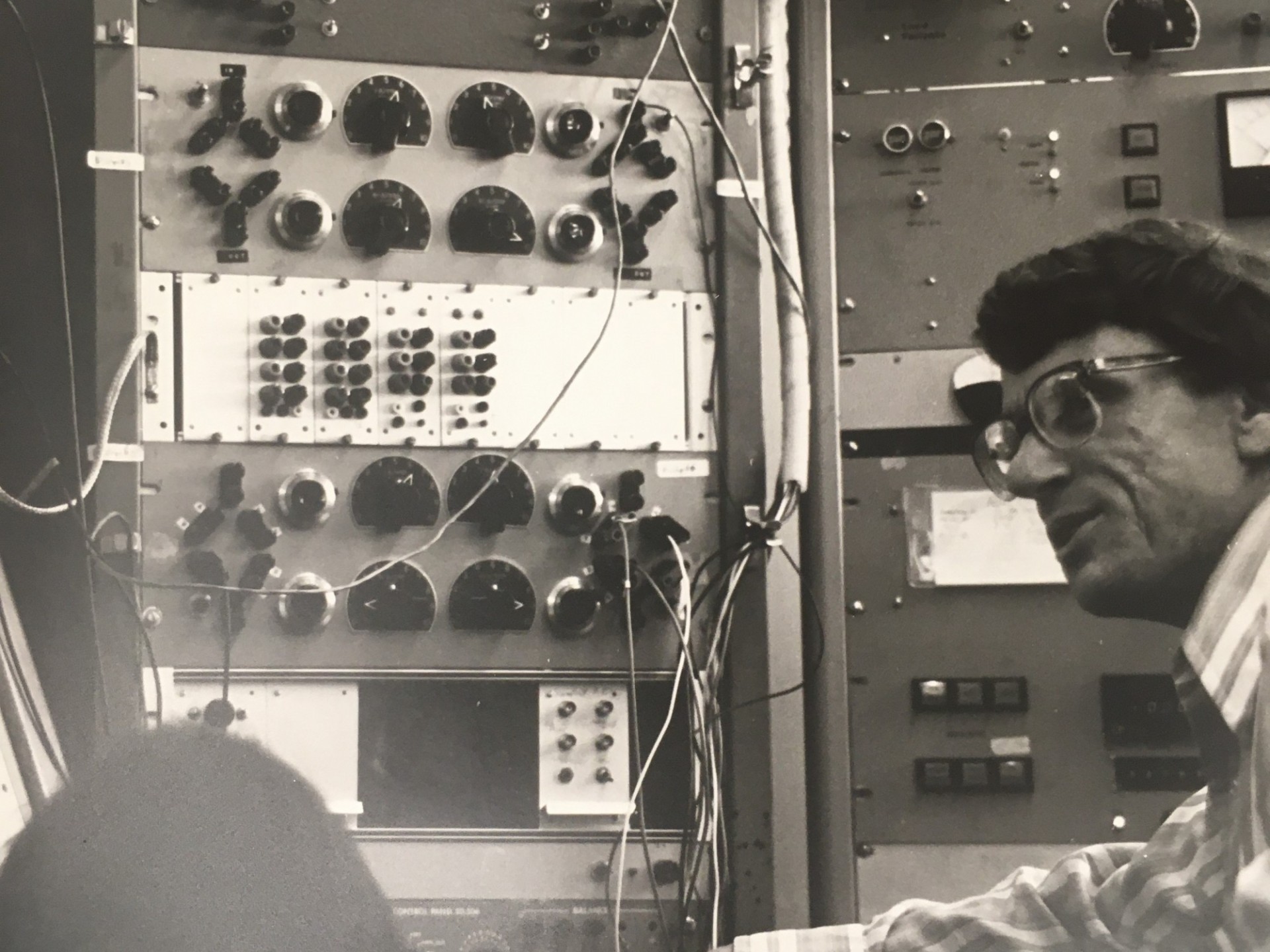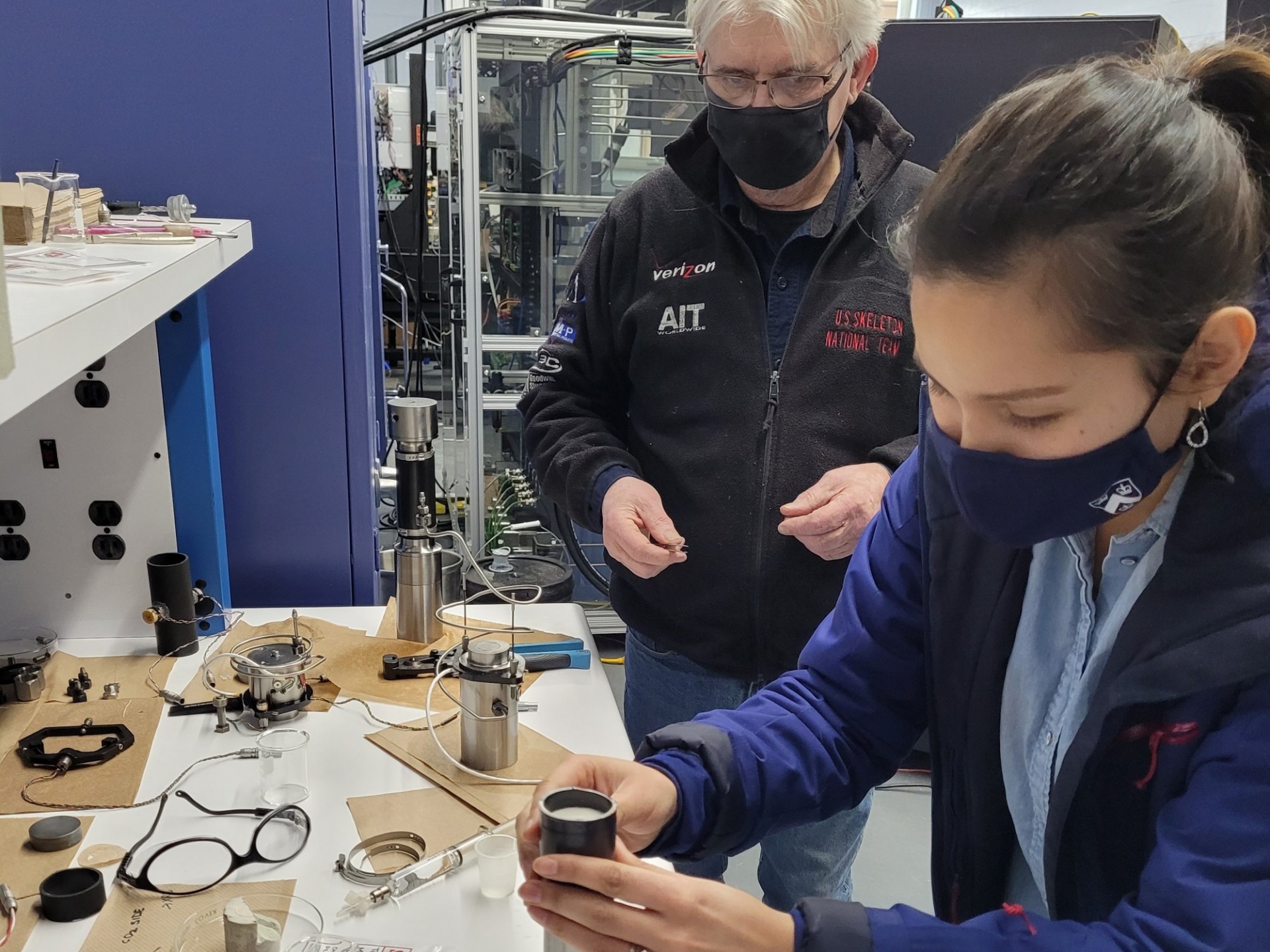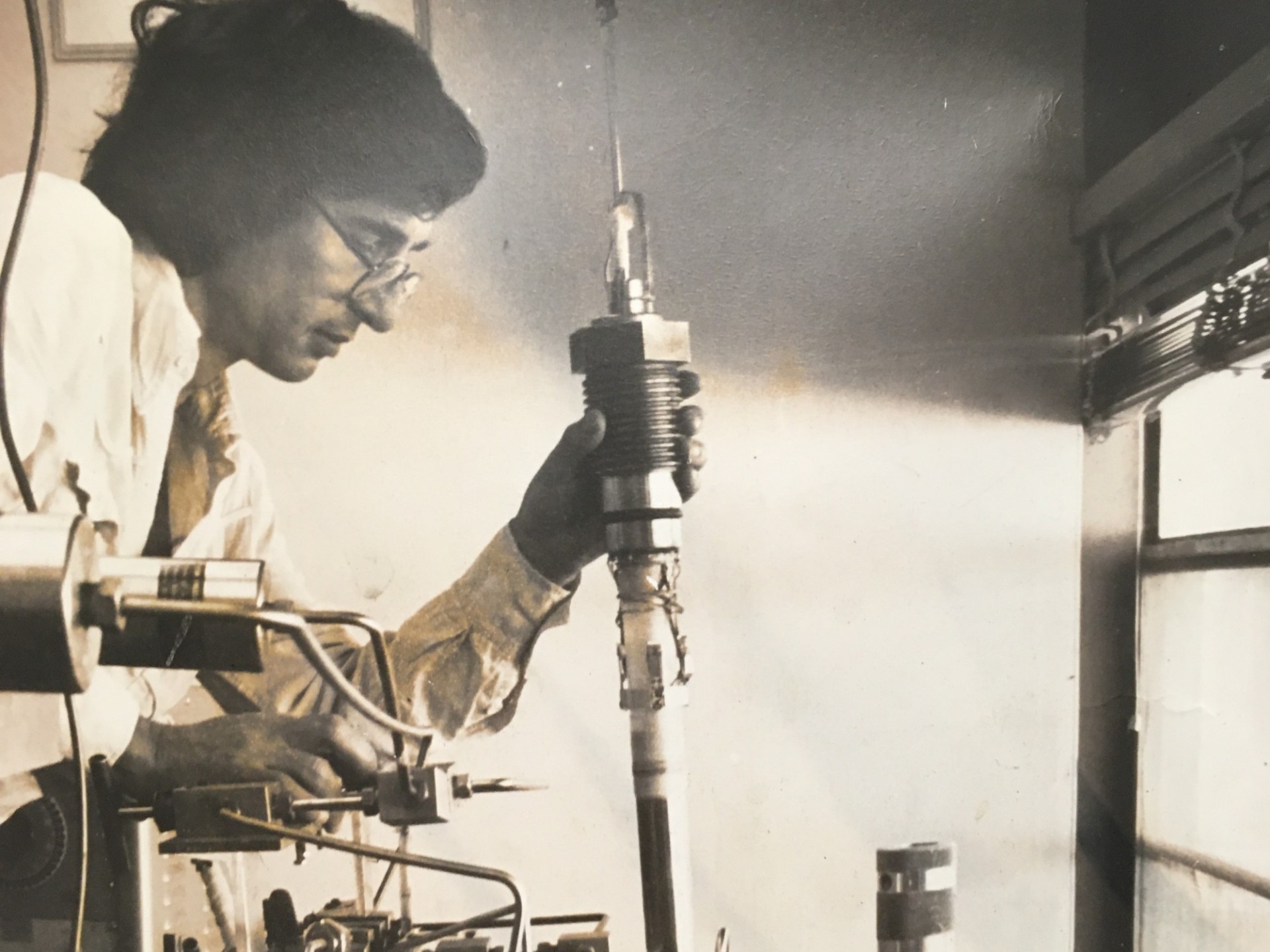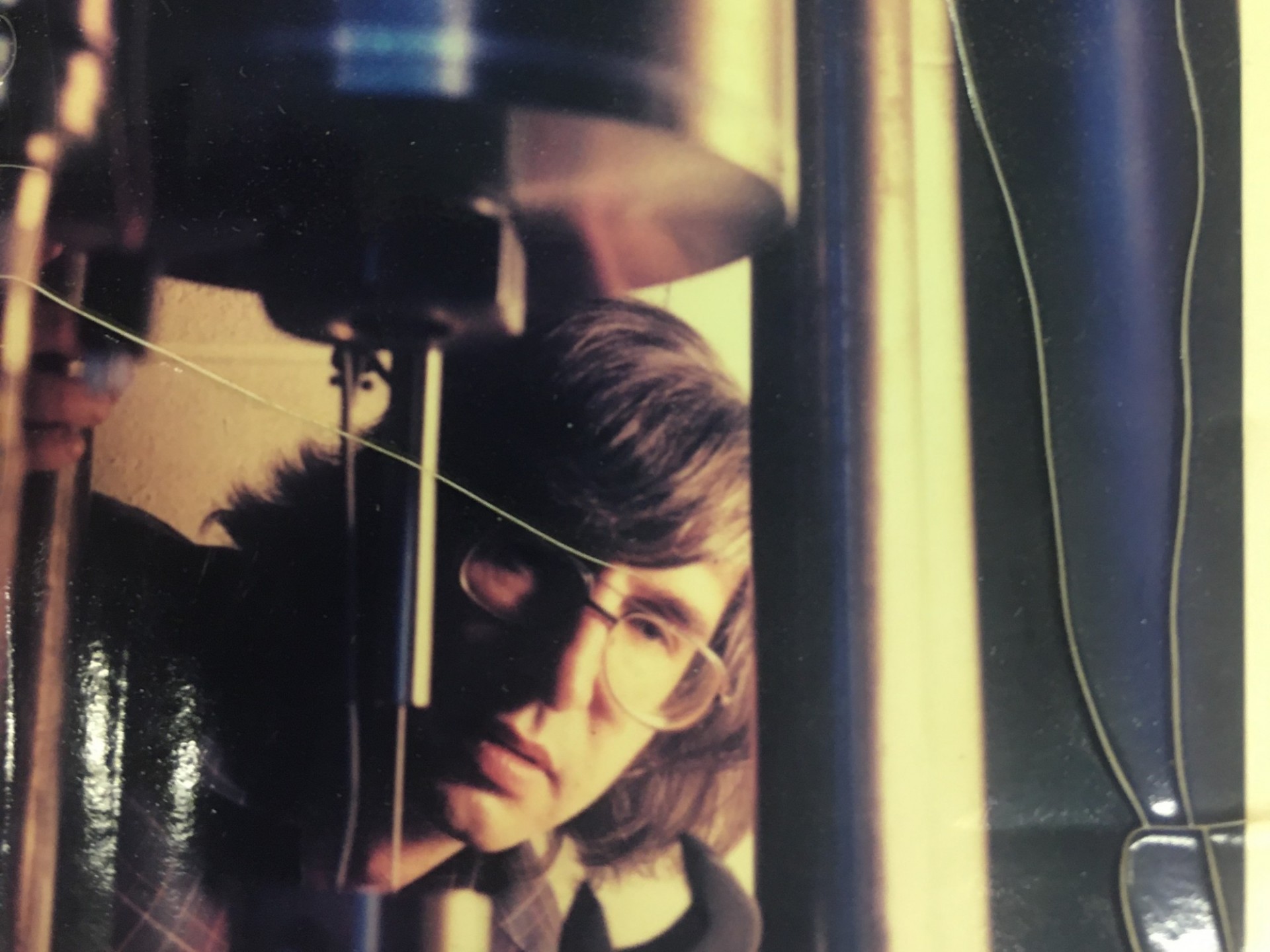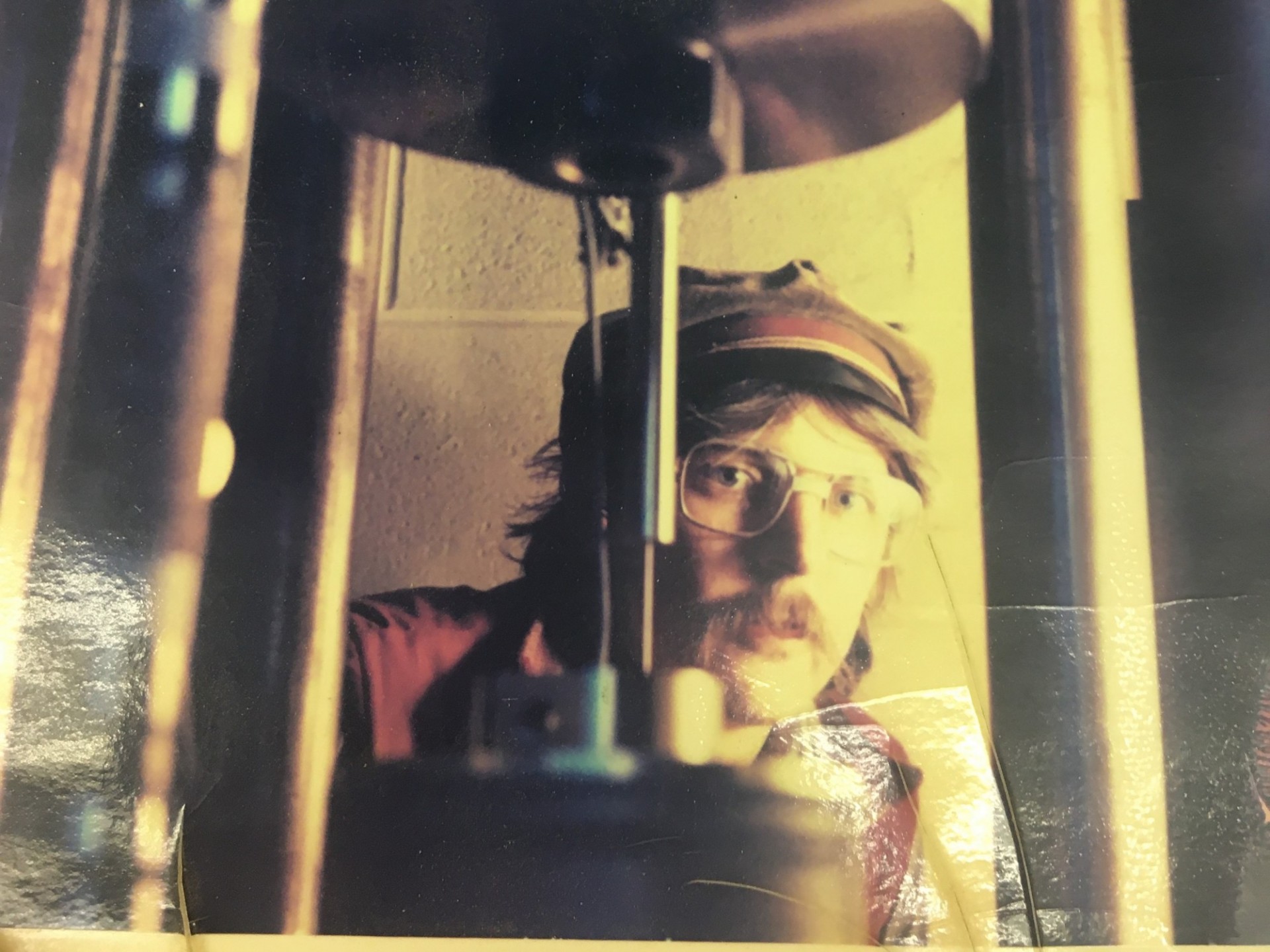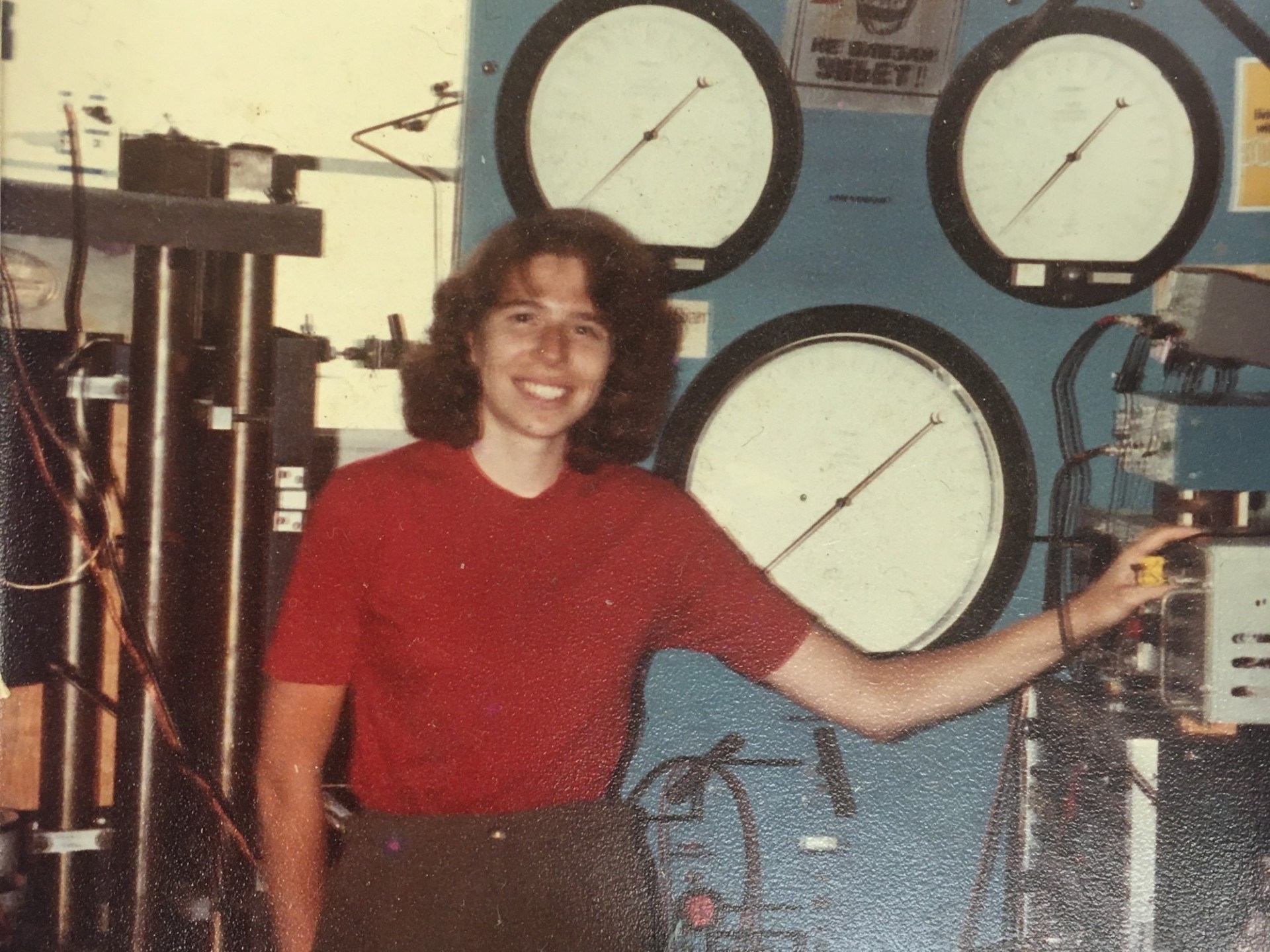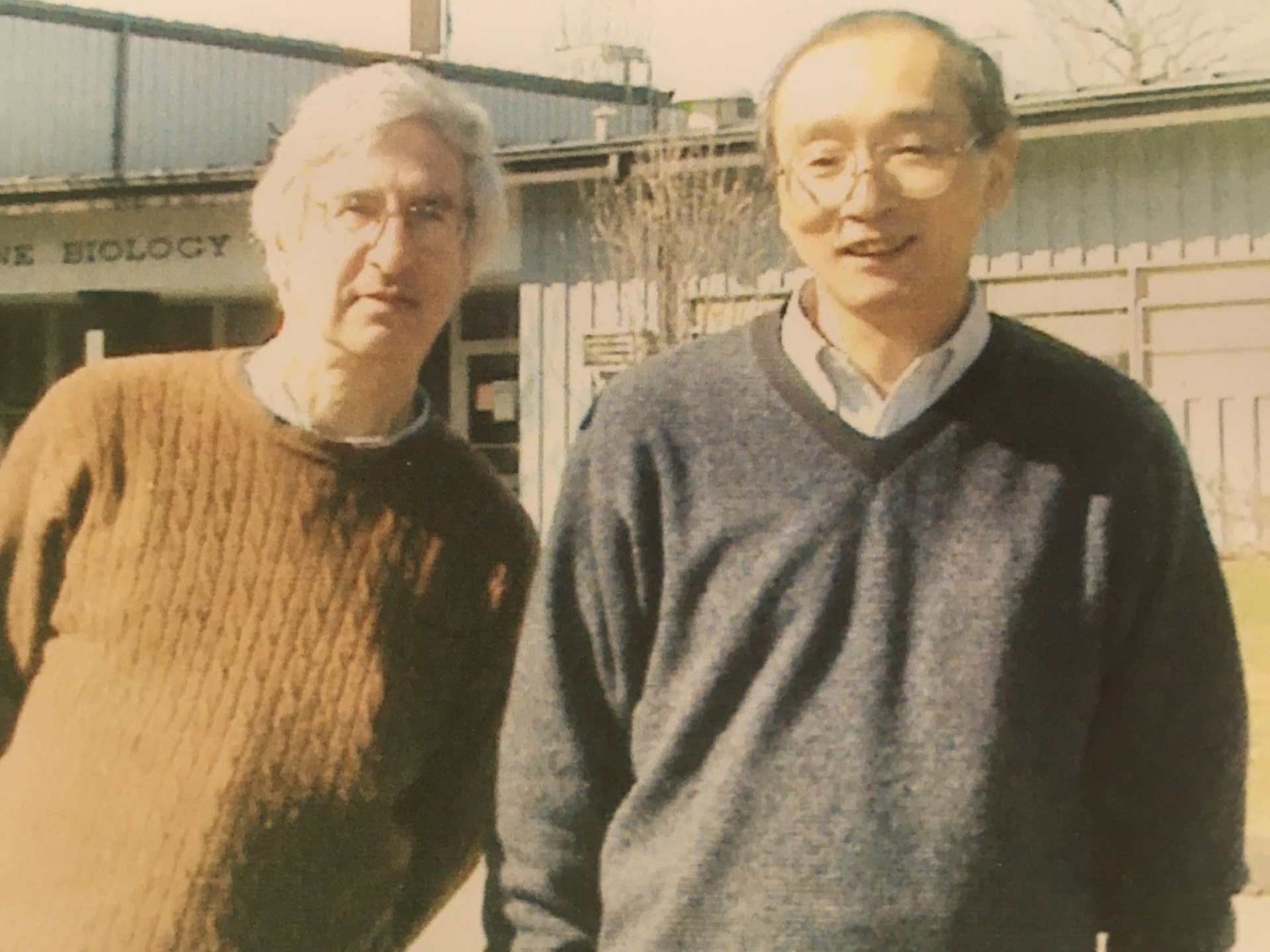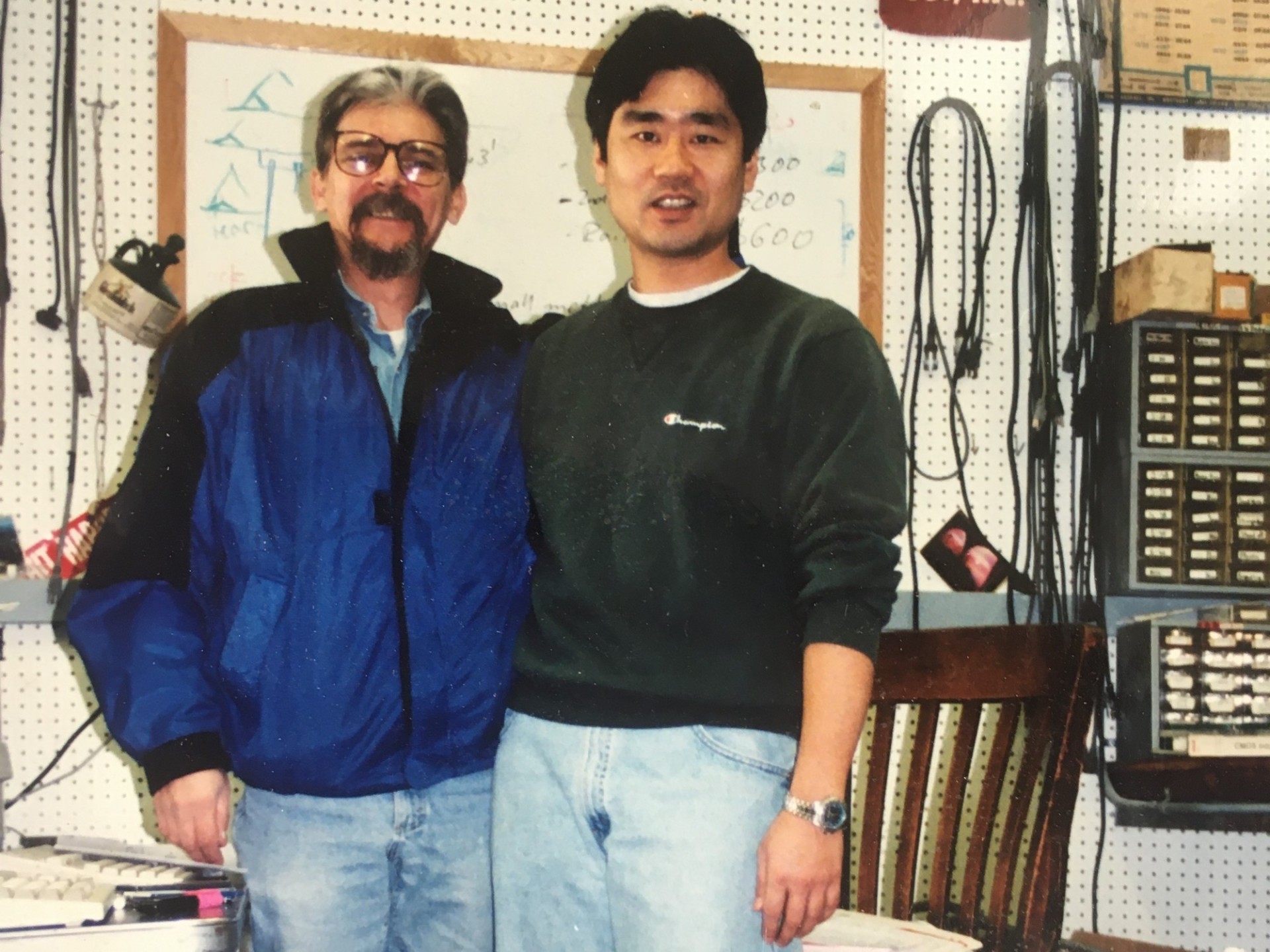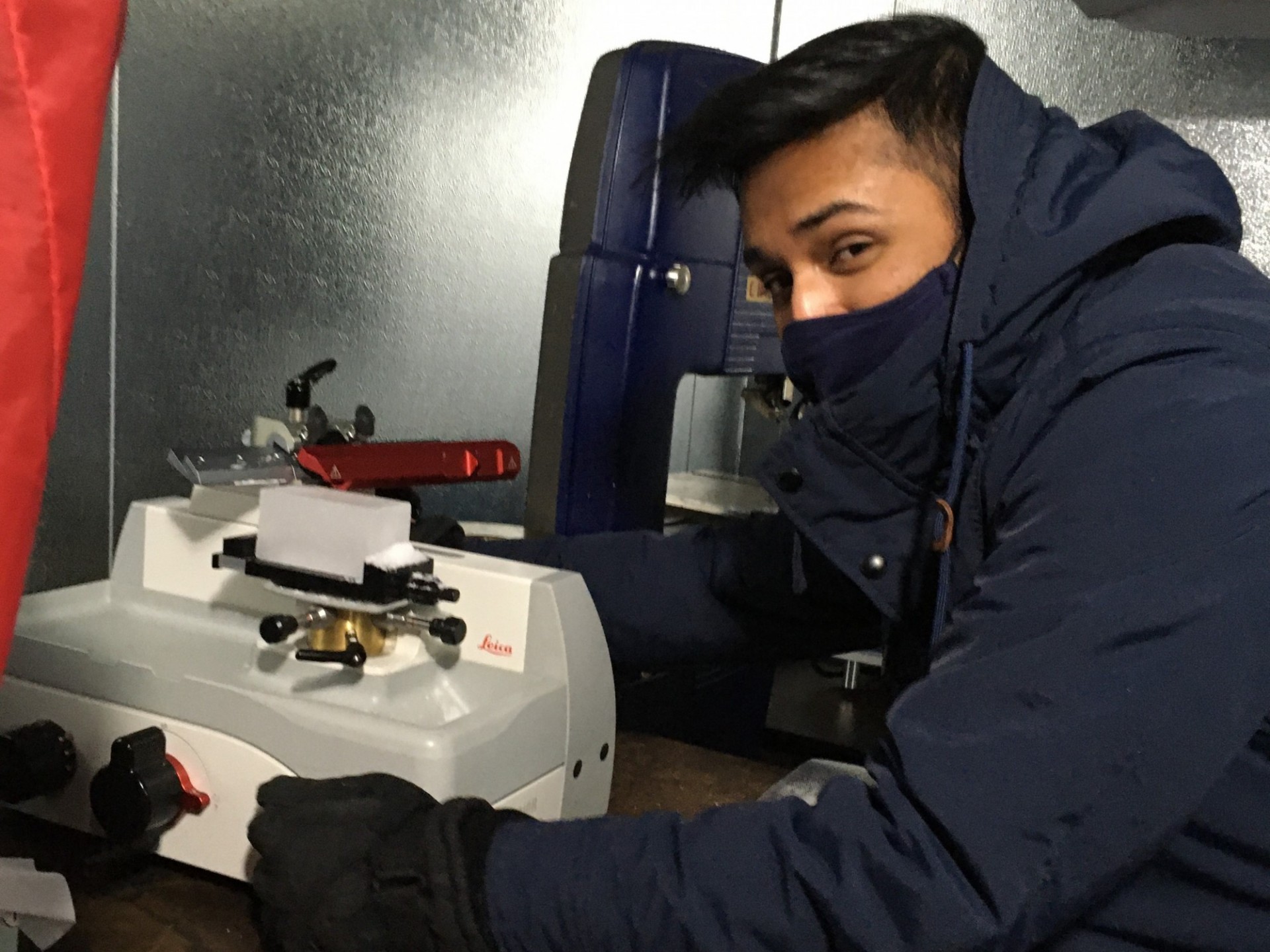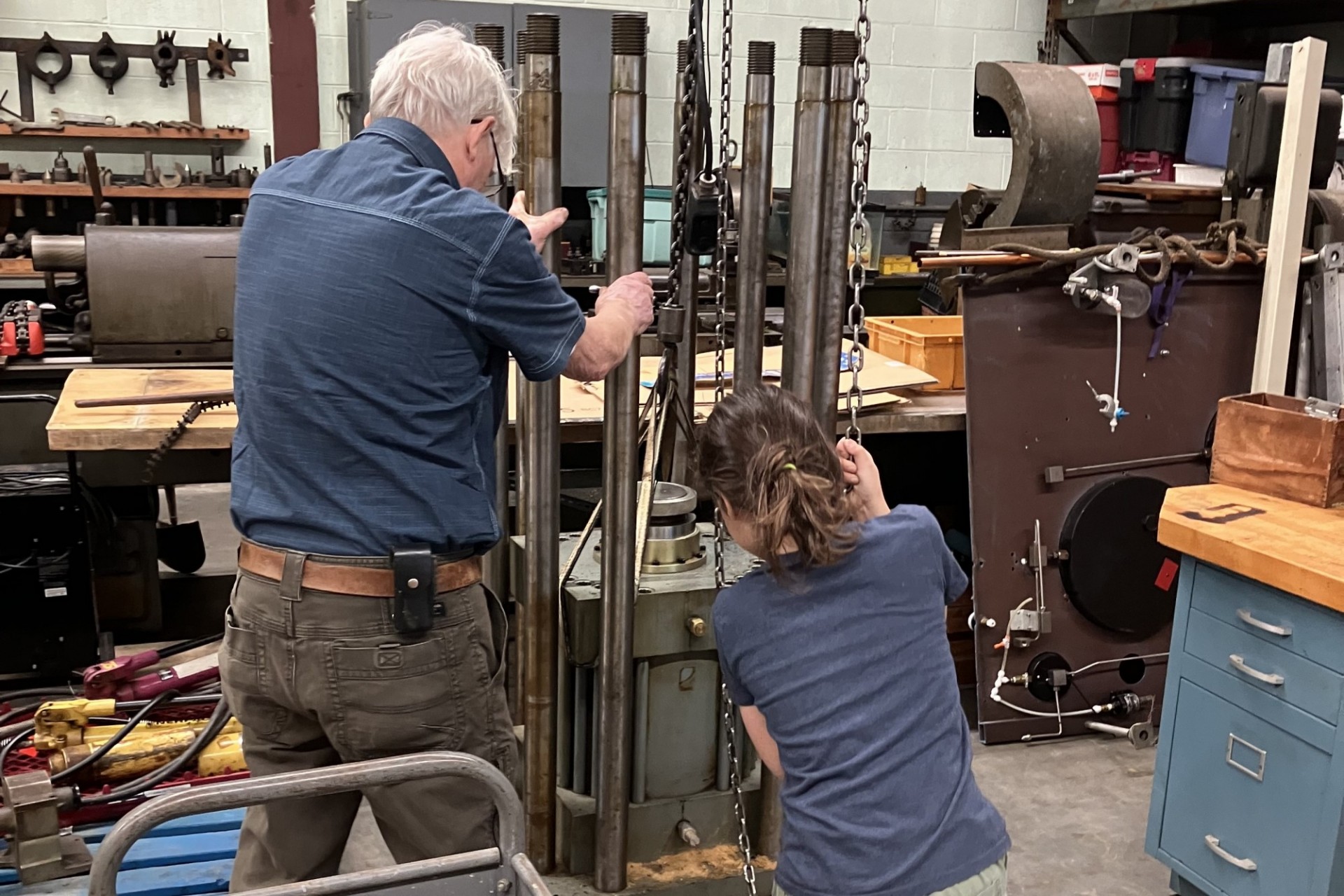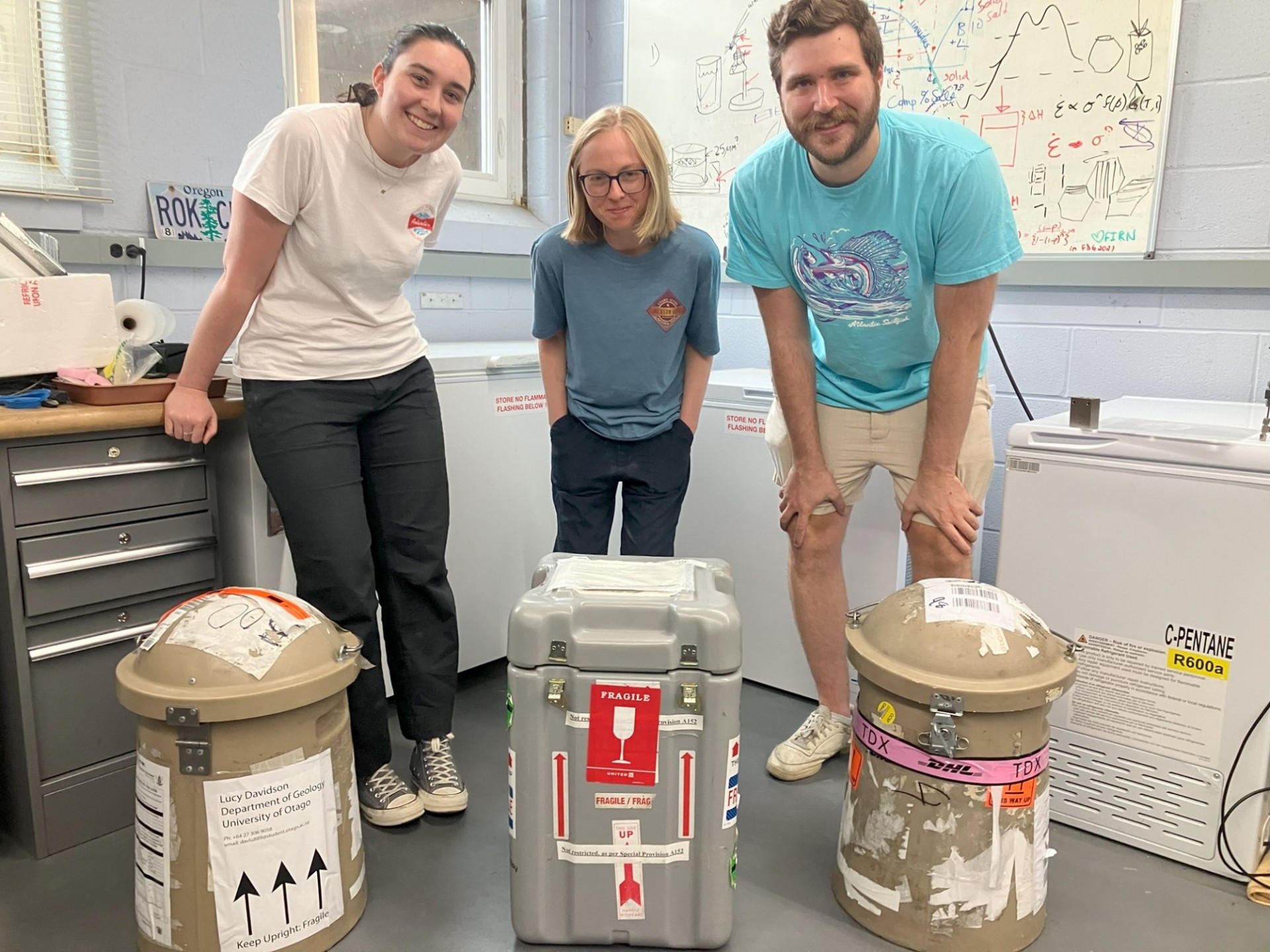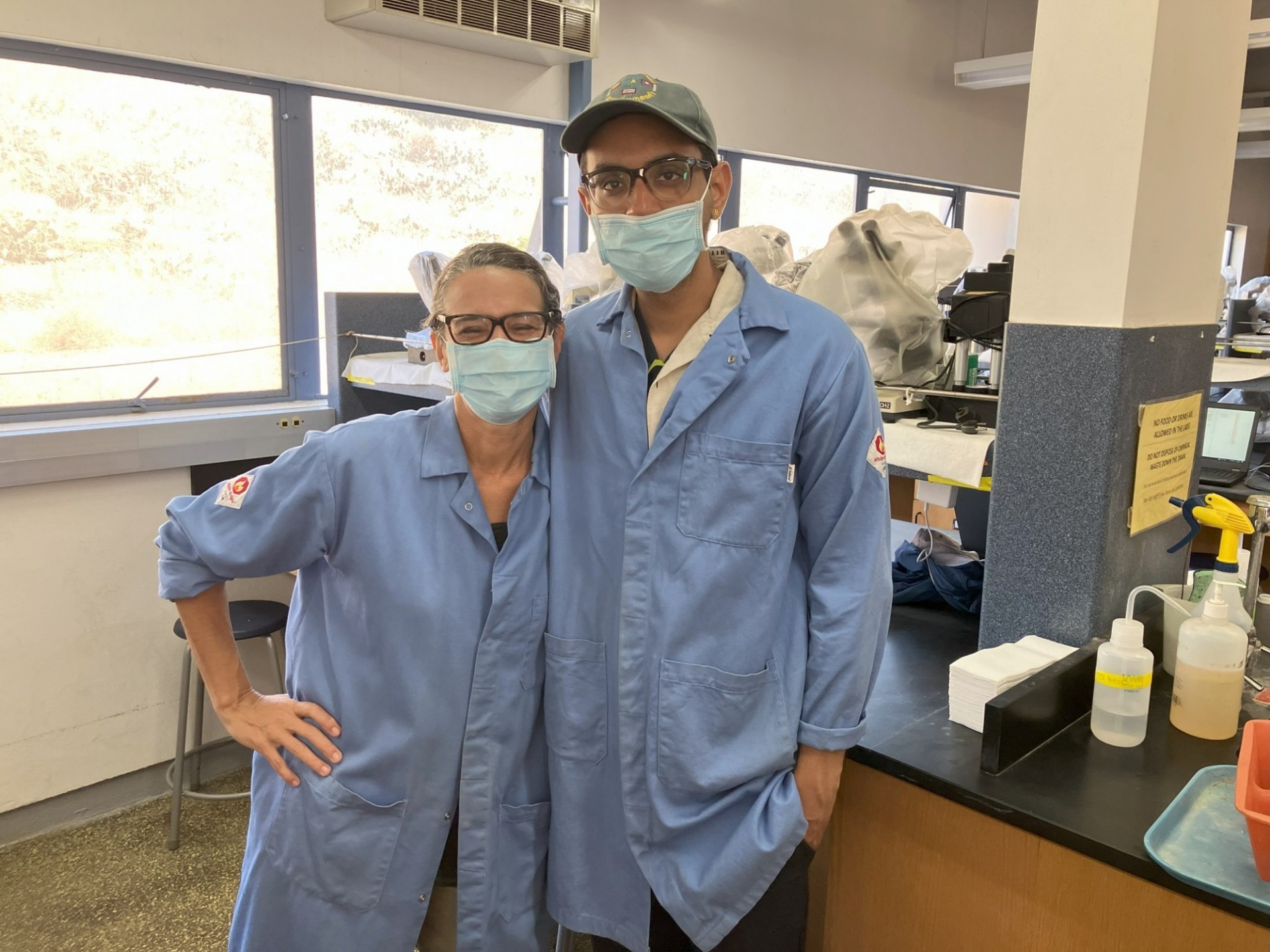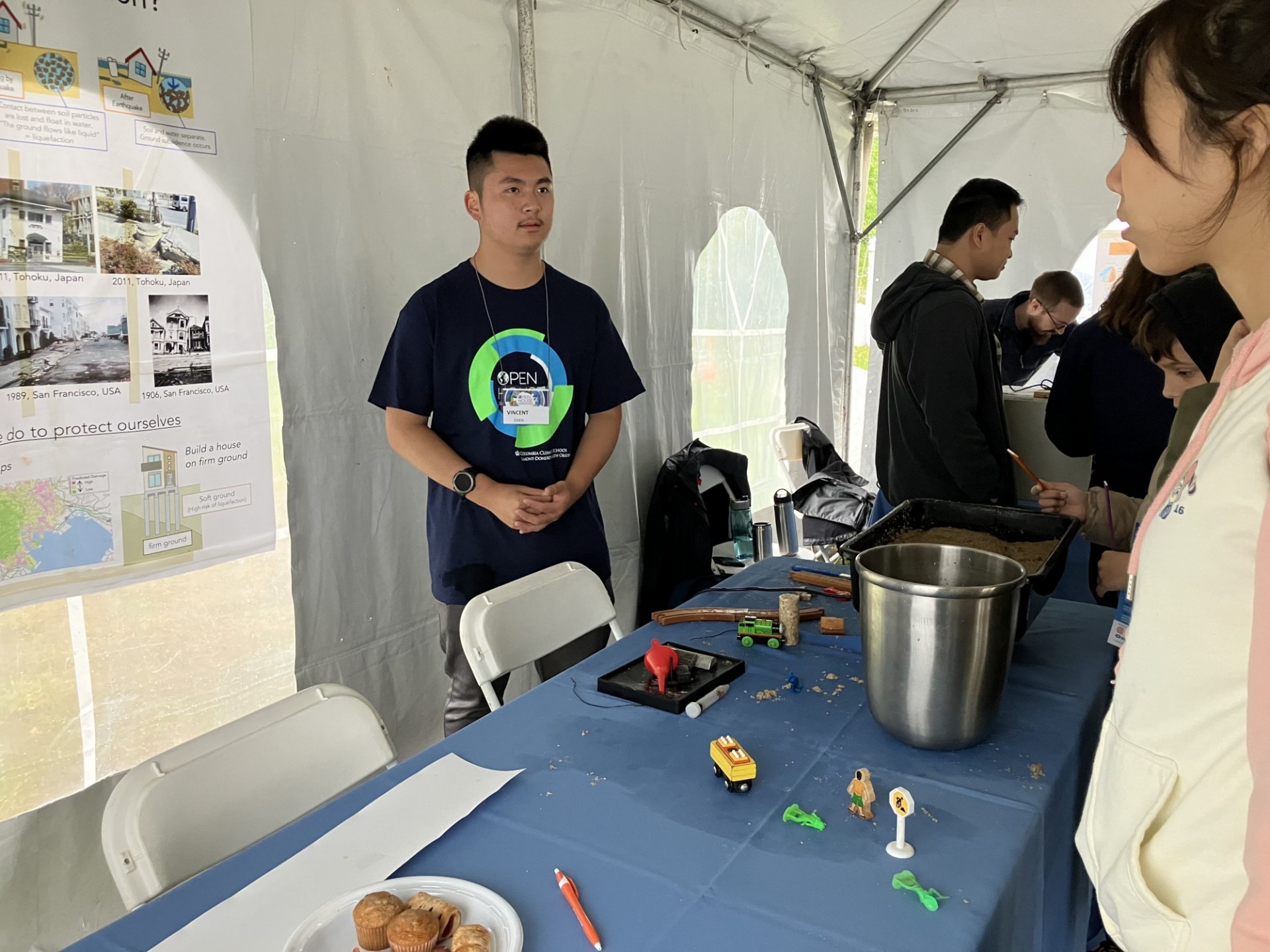Research in the Rock and Ice Mechanics Lab encompasses many aspects of ice and rock deformation, with applications on Earth and throughout the solar system. We work on a variety of funded projects, collaborating with researchers around the University, including Peter Kelemen, Jonny Kingslake, Meredith Nettles, Alissa Park, and Marc Spiegelman. Using lab experiments, we work to understand the physics of faulting, exploring the properties of rocks and ice from the micro scale of defects and asperities up to the macro scale of fault heating and rupture. This research informs our understanding of earthquake dynamics, and sheds light on anomalous heat production found in icy faults on earth and in the outer solar system. Follow us on Twitter.
Tools of the Trade: Machines that Squeeze and Tickle Rock and Ice
In the Rock & Ice Mechanics Lab, we use various laboratory instruments to study the physical properties of materials that are important to Earth and planetary science. We study natural rocks and ice, with facilities for coring, sawing, and grinding of experimental samples. We have an adjacent machine shop, a central facility for more detailed jobs, and a cold room for ice sample preparation and storage. Learn more about the custom machines that we use for our research.
Rock & Ice Mechanics Lab Principal Investigators
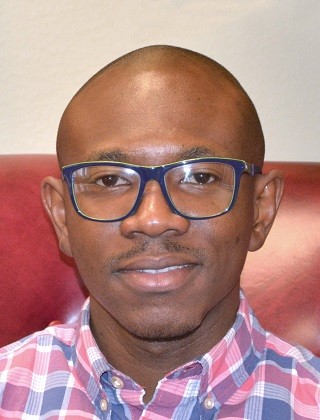
Folarin integrates field observations, geophysics, and geomechanics to study the brittle deformation of the Earth's crust. He is currently investigating how strain is localized during the early stages of continental extension as well as basement structures that influence anthropogenically induced earthquakes and natural intraplate earthquakes.
Rock & Ice Mechanics Lab Research Staff
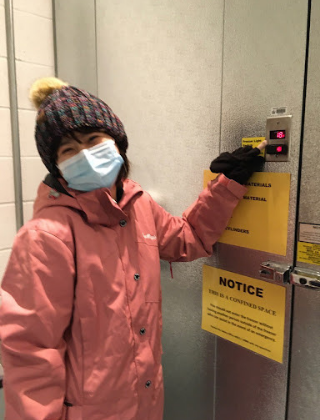
Hatsuki is an expert on the properties that control seismic attenuation, including grain size, temperature, and partial melt (including pre-melt). Her work at Lamont is to additionally look at the effect of strain-induced dislocation structure and density on attenuation, using ice as an analog to upper mantle rock.

Rasheed’s primary research area is Computational Seismology. He is interested in utilizing and developing seismic imaging techniques to understand the Earth’s crustal structure and evolution and improve seismic hazard assessment. His current study areas include Southern California, Indo-Burma, East and South Africa, and Madagascar.

Abhishek’s interests are in high pressure experimentation and microstructures. He will be leading our Sloan-funded efforts on carbon mineralization as a way of removing and safely storing atmospheric CO2.

Charlotte is interested in geomaterial deformation and how it controls broader earth and planetary systems – particularly icy systems. She is currently working to characterize fault mechanics on icy moons.
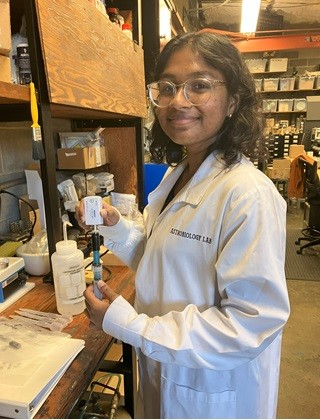
Shradha is interested in using experimental techniques to study the interior structures of icy moons. She is characterizing physical properties of binary ice-salt systems that may be found on Europa and/or Enceladus.
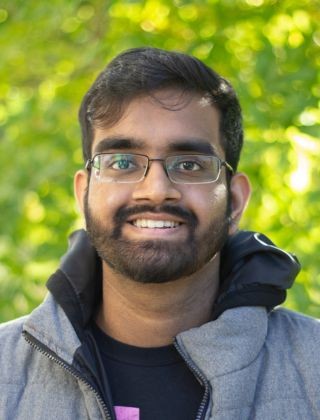
Hari is interested in the surface and subsurface conditions of icy worlds. He will be helping us get cryovolcanism experiments up and running.

Cameron is pursuing an undergraduate degree in Earth Sciences. He is currently researching fault scaling relationships in regions of incipient continental rifting.
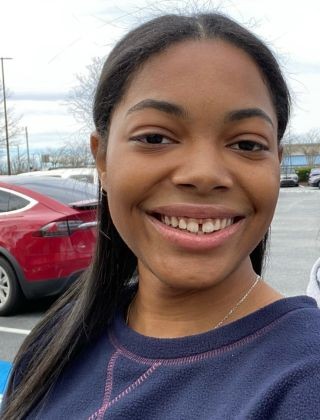
Brooklyn is interested in Earth Science. She will be exploring new and novel methods of fabricating ice for our cryogenic projects.



